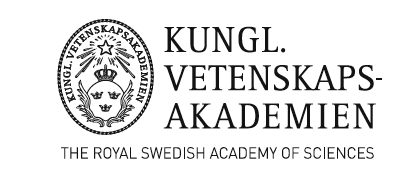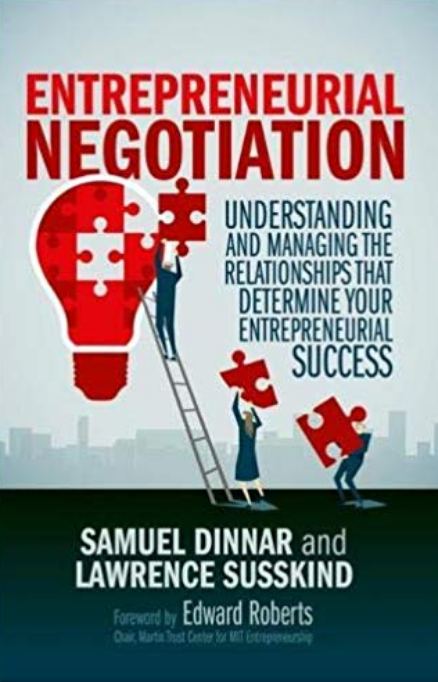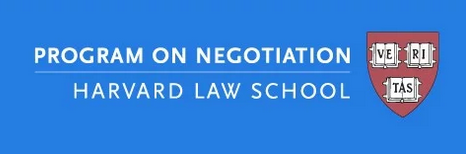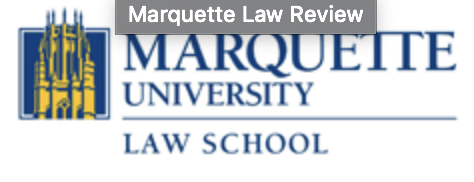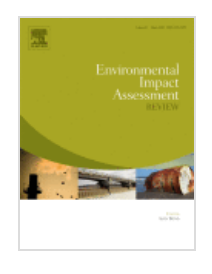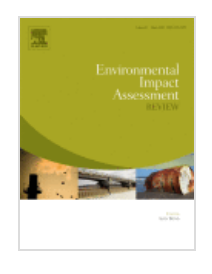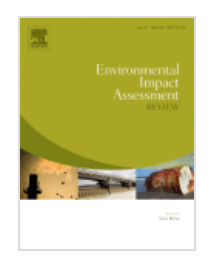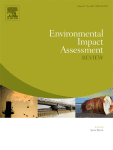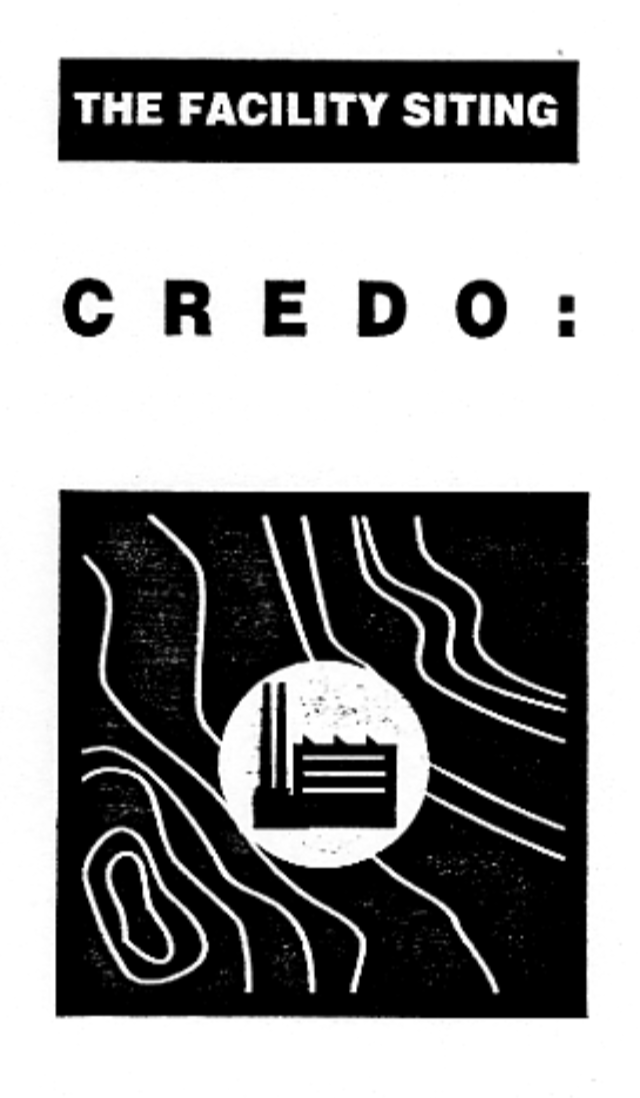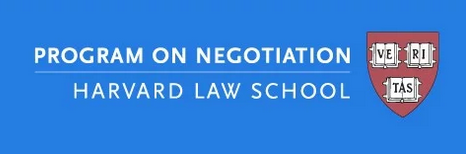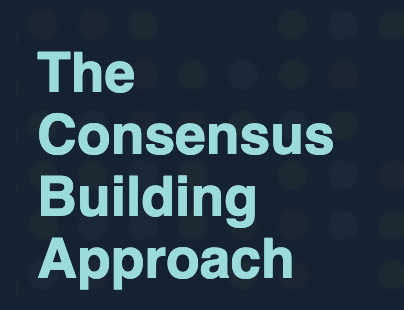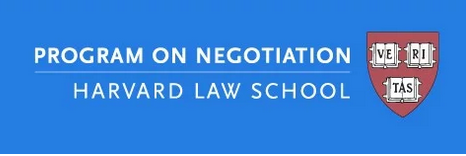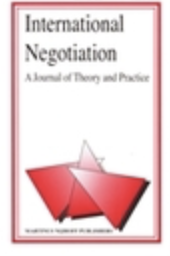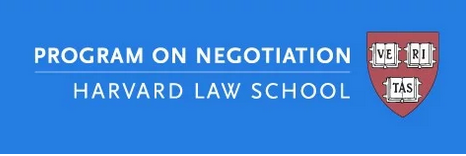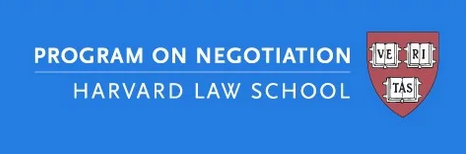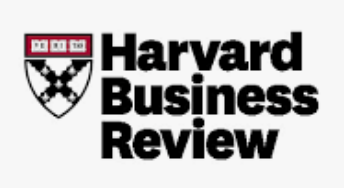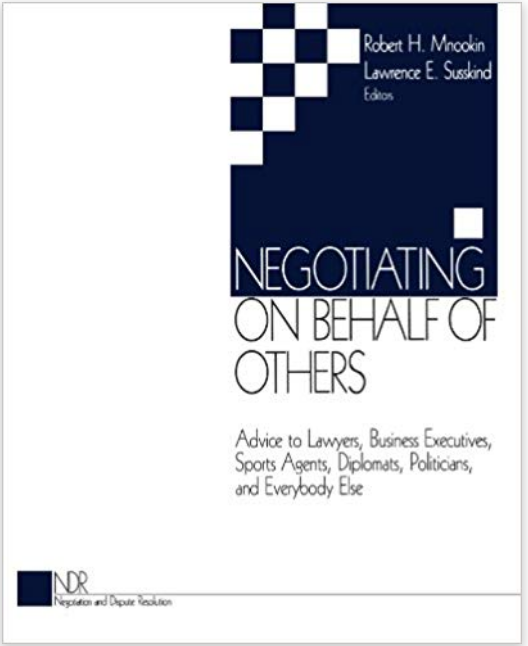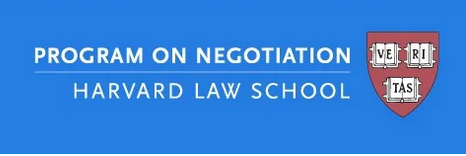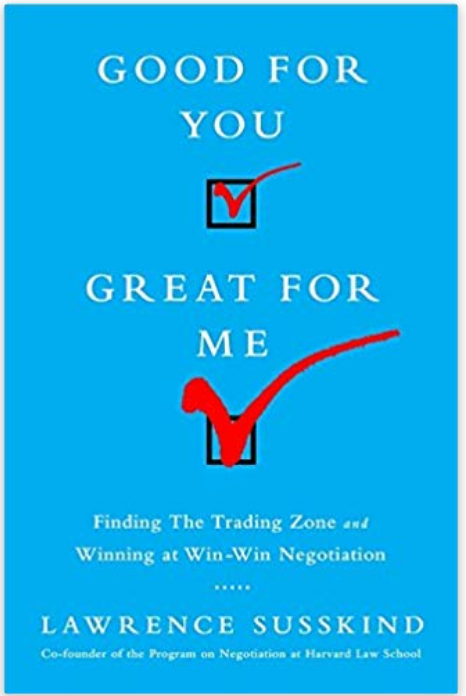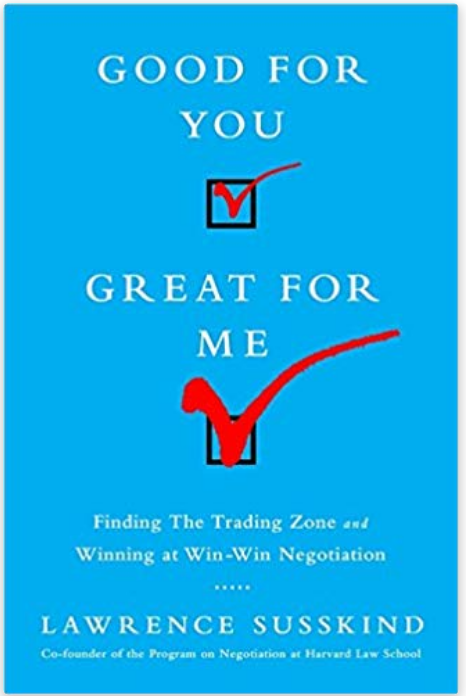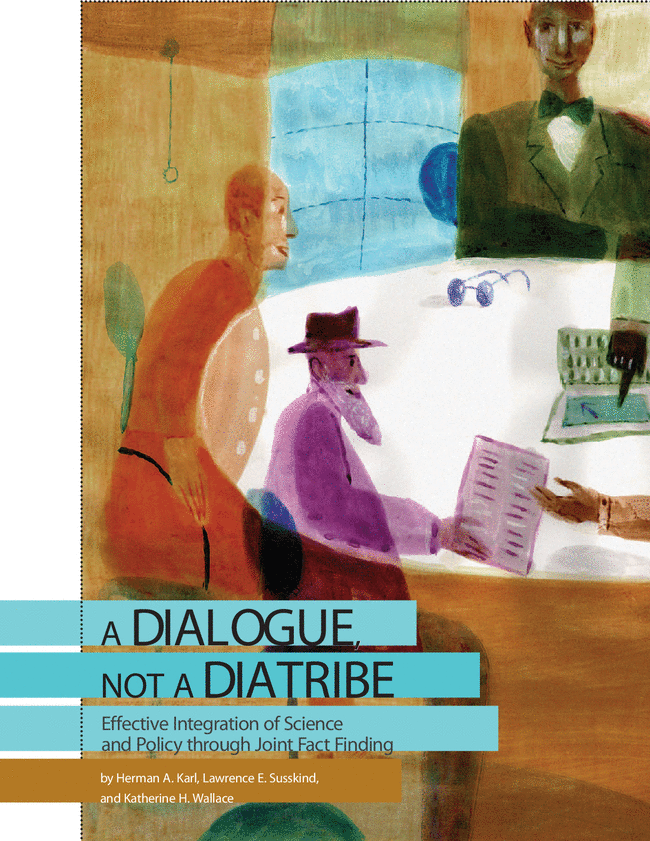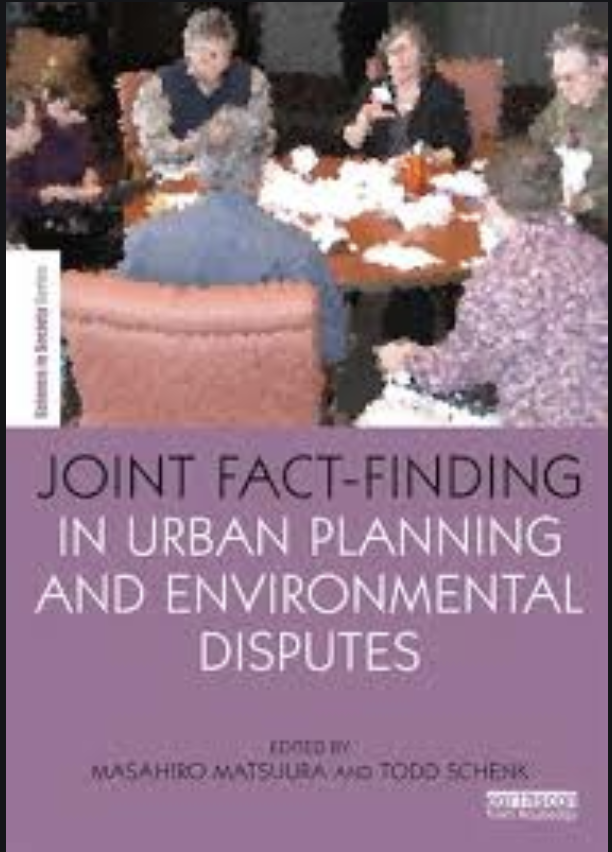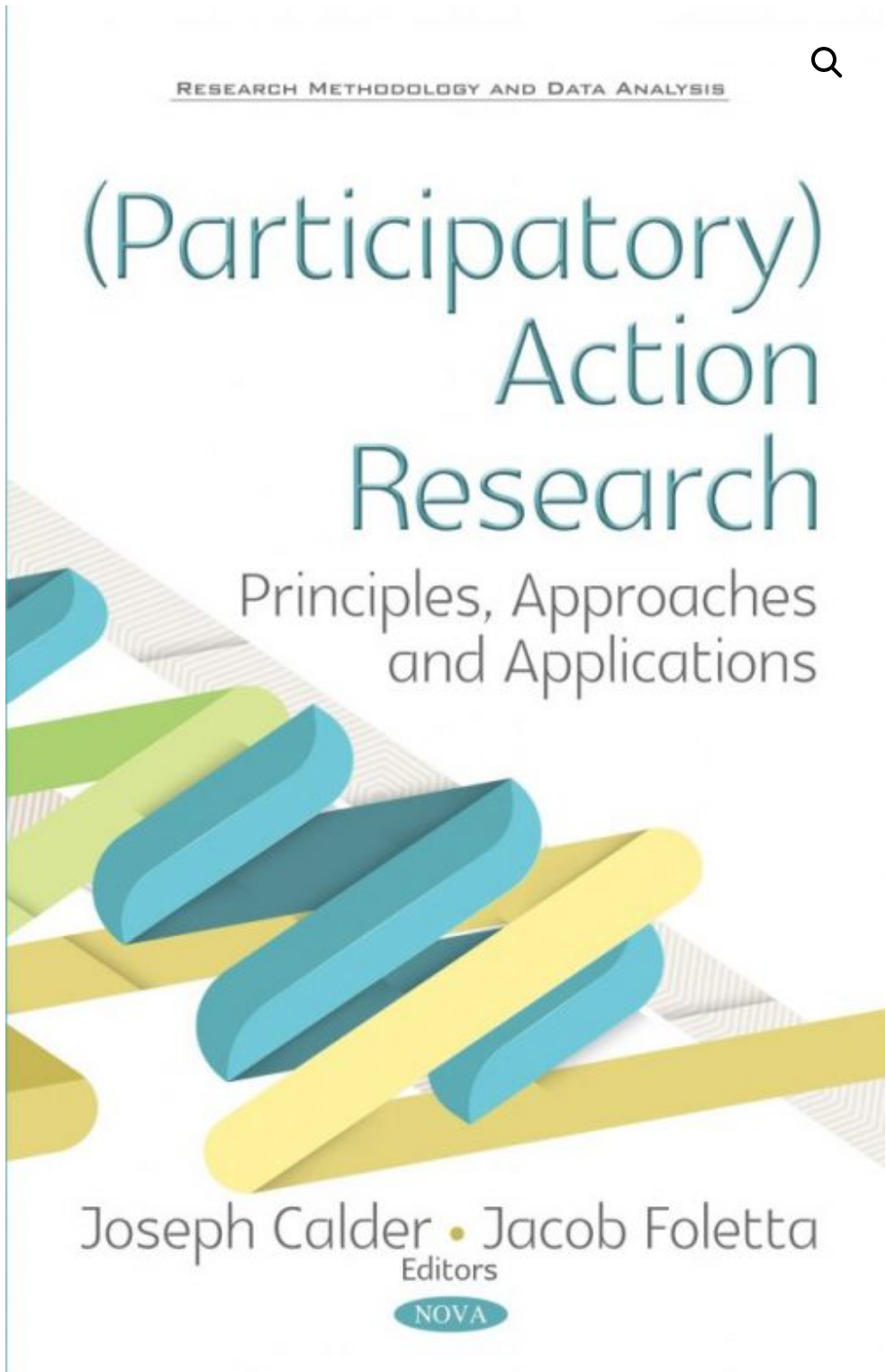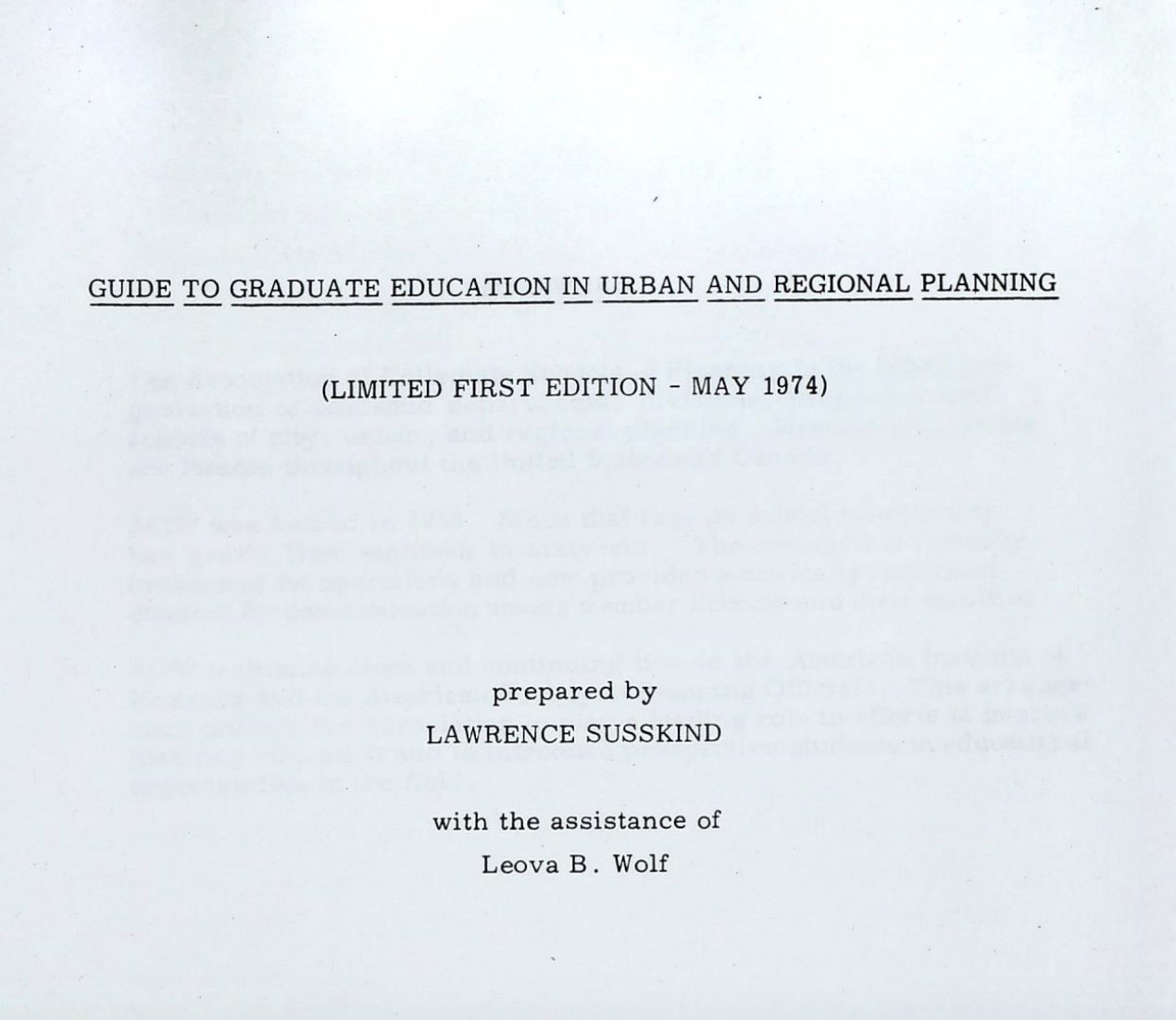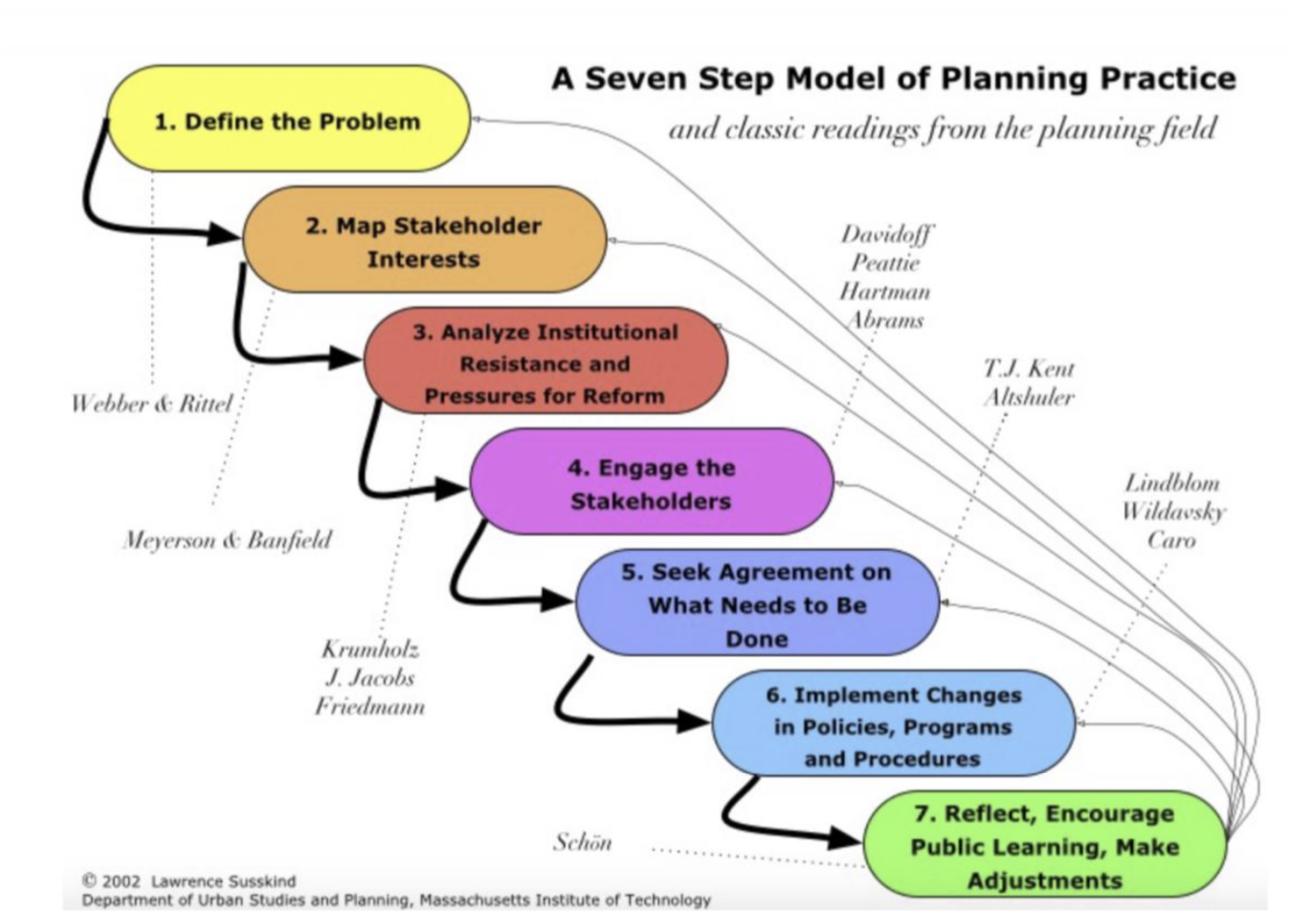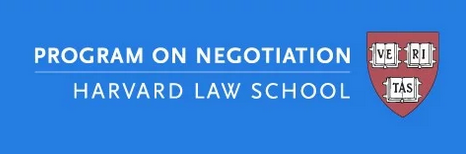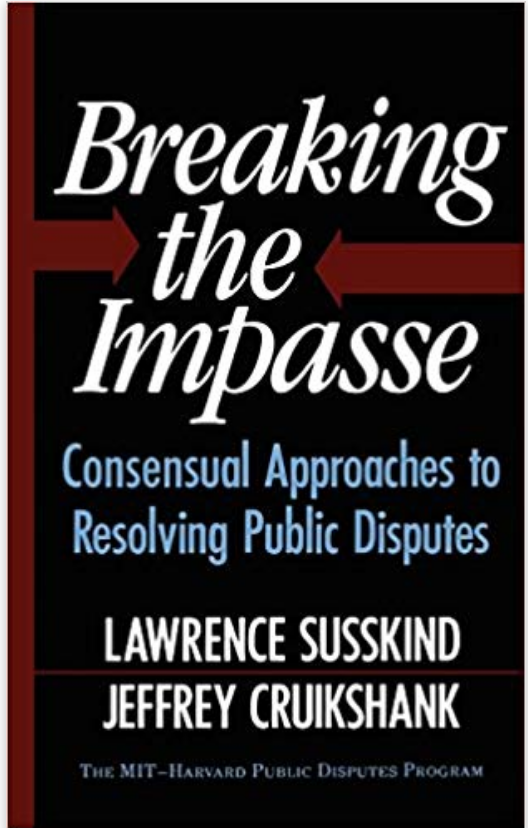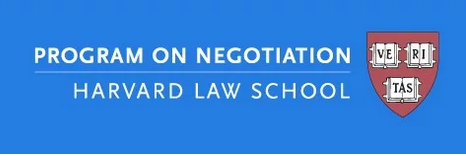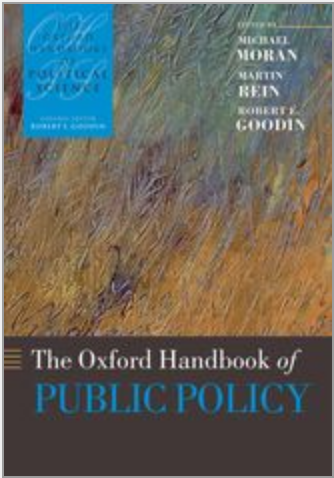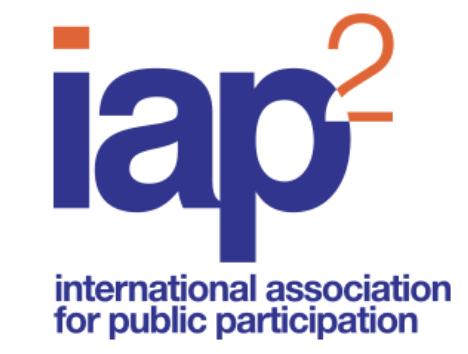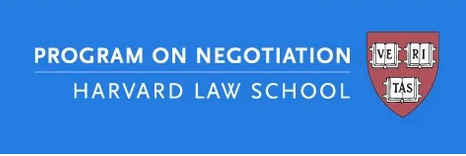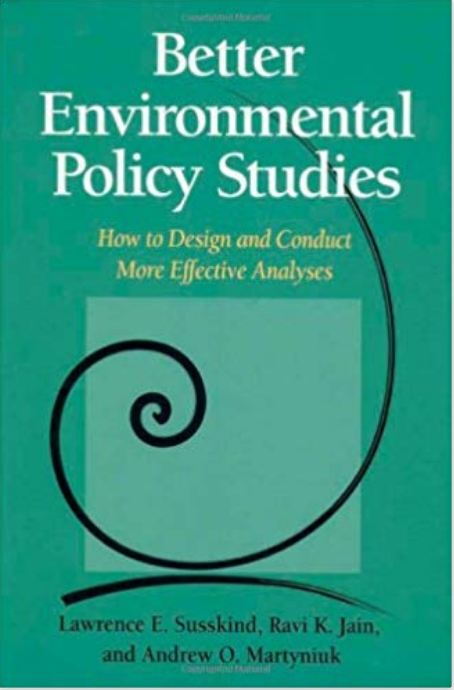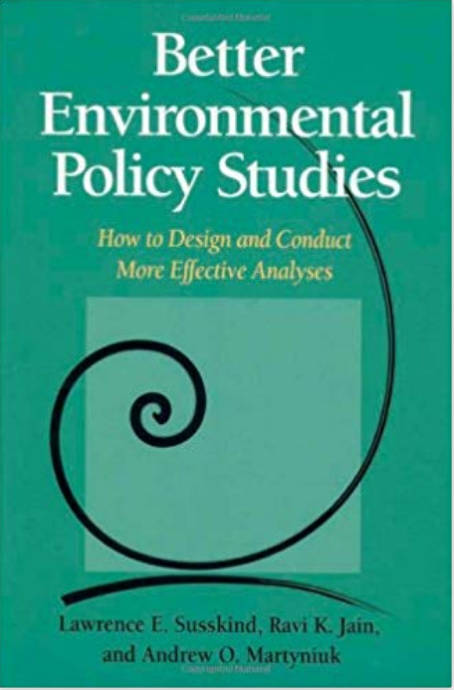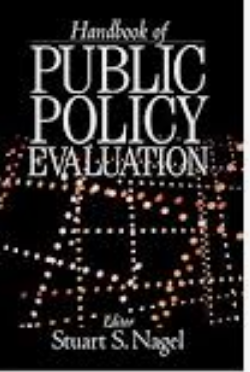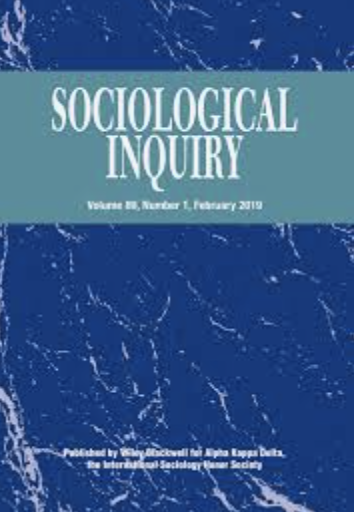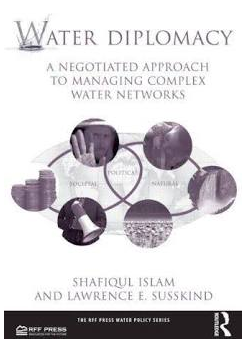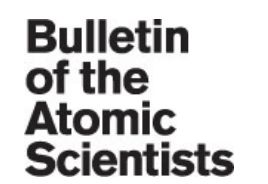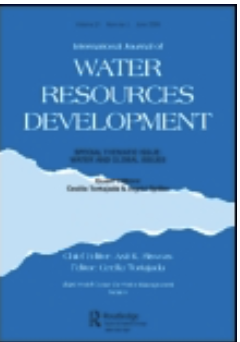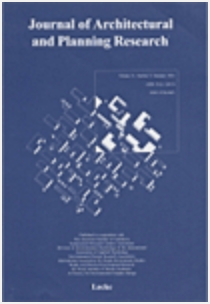Susskind, Lawrence. Framing the Situation: The Owl and Timber Case Worksheet. Cambridge, MA: Consensus Building Institute.
Susskind, Lawrence. "Planning for New Towns: The Gap Between Theory and Practice." Sociological Inquiry 43, no. 3-4 (1973): 291-310.
Influential members of the urban planning profession have developed certain ideas about new town design,including notions such as self-containment, social balance, and the neighborhood unit. These parallel, to some extent, concepts that have emerged from the field of community sociology. Efforts to put these ideas into practice have fallen far short of the mark. Without more sophisticated implementation mechanisms, better theories of social interaction at the neighborhood level, and new approaches to citizen participation, efforts to build new towns are likely to remain severely crippled. The aim of this paper is to summarize past efforts to translate implicit theories of social organization into actual new town designs. The possibilities of closing the gap between theory and practice through the use of more explicit forms of social experimentation are discussed in the context of the fledgling new towns program in the United States.
Susskind, Lawrence. "The Future of the Planning Profession." In Planning in America: Learning from Turbulence, 138-160. Washington: American Institute of Planners, 1974.
There are a number of factors that account for the changing scope and style of planning practice in the United States. Among these are shifts in public perceptions about the responsibilities of government; fluctuating economic conditions and increased competition for scarce resources; the augmentation, adaptation, and diffusion of new technologies; and rising expectations about the required level and appropriate distribution of public goods and services.
Susskind, Lawrence. Guide to Graduate Education in Urban and Regional Planning In Guide to Graduate Education in Urban and Regional Planning. Washington: American Institute of Planners, 1974.
The Association of Collegiate Schools of Planning (ACSP) Guide is designed especially for college students contemplating career in urban and regional planning and for counselor who want to assist students in locating appropriate training and educational opportunities.
Susskind, Lawrence. "The Logic of Planning Practice: A New Focus for the Teaching of Planning Theory." Papers on Planning Education and Research 5 (1975): 1-24.
Planning theory as it is currently taught in the United States is rarely keyed to the problem of how to be effective in practice. The material traditionally covered in planning theory courses (i.e. the history of the planning profession, goal-setting and decision-making, the structure and function of urban areas, master planning vs. contingency planning, and alternative notions of the public interest and advocacy planning) offers little in the way of prescription for everyday action. Even recent additions to the body of planning theory dealing with optimization, political economy, client analysis, and the nature of the good society do little more than broaden a student’s perspective.
Susskind, Lawrence, and M O'Hare. Managing the Social and Economic Impacts of Energy Development: Strategies for Facility Siting and Compensating Impacted Communities and Individuals In Working Papers from the MIT Energy Impacts Project. Cambridge , 1977.
The MIT Energy Impacts Project, funded by the United States Department of Energy, began as an inquiry into the nature of the energy boomtown problem confronting the western states in America. We are now investigating strategies for calculating the “social costs” of energy development and compensating communities and individuals who bear the brunt of continued efforts to exploit energy resources in the United States.
Susskind, Lawrence, and Alan Weinstein. "Towards a Theory of Environmental Dispute Resolution." Boston College Environmental Affairs Law Review 9, no. 2 (1980): 311-357.
It is our contention that successful environmental dispute resolu- tion will depend on a thorough understanding of (1) the forces and conditions that have given rise to a search for negotiated solutions and (2) the unique qualities of environmental disputes that make their resolution difficult. We propose a series of steps to address environmental disputes, drawing heavily on the experience of the planning profession with bargaining and negotiation in public participation programs. We recognize that problems remain with our approach and consider how these may be analyzed and addressed. The article concludes with two steps that could be taken towards resolving remaining problems.
Susskind, Lawrence, and Stephen Cassella. "The Dangers of Pre-emptive Legislation: The Case of LNG Facility Siting in California." Environmental Impact Assessment Review 1, no. 1 (1980): 9-26.
In 1977, when the accumulation of well-intentioned regulations made it difficult to site a liquified natural gas (LNG) facility in California, the lcgislature, with the full support of Governor Edmund G. Brown, Jr., passed a law, Senate Bill 1081 (Chapter 855, Statutes of 1977), that said, in effect, "not withstanding any previoti'sly cnacted legislation or regulatory requircments, California will designate an LNG terminal sitc within a year." The state's attempt to preempt local regulatory authority, to say nothing of the legislature's willingncss to circumvent its own facility siting, coastal protection, and environmcntal impact assessment laws, seems to liave failed. This case study describes the circumstances leading up to the enactment of S.B. 1081 and analyzes tile dangers associated with preemptive legislation. Had California confronted the real weaknesses in its energy facility siting process, the state could have identified positive steps that" would have accelerated site ~selection without triggering the staunch opposition that now threatens indefinite delay.
Susskind, Lawrence, and Louise Dunlap. "The Importance of Nonobjective Judgments on Environmental Impact Assessments." Environmental Impact Assessment Review 2, no. 4 (1981): 335-366.
The practice of environmental impact assessment (EIA) is shaped in large part by the values and beliefs of the professionals involved. Values-or nonobjective personal judgments of merit or worth- influence the choices made at all junctures of an impact assessment. Personal or nonobjective considerations affect outcomes more than is usually recognized. We intend to describe some of the value choices
typically encountered in EIA and to analyze the ways in which planners and engineers typically handle them-sometimes well, sometimes not so well. We think it is important for impact assessment practitioners to become more aware of the value considerations that shape seemingly technical decisions and to develop conscious strate- gies for dealing with them.
Our data come from four EIA case studies: (1) sludge disposal in South Paris, Maine; (2) sewering in North Branford, Connecticut; (3) relocation of the northern segment of Boston's central highway artery; and (4) relocation of a mass transit line in Boston's Southwest Corridor. Case summaries are presented with each of the case discussions in this article, and three of the cases appear in full later in the issue. We also draw on the environmental impact assessment literature.
The case studies were prepared by graduate students in the Department of Urban Studies and Planning at the Massachusetts Institute of Technology. The cases were selected because they were recent, the active participants in the EIA process were accessible, and the projects involved were relatively controversial. Each case is built upon interviews probing the key actors' perceptions of decisions made during the assessment process. Through the interviews, we sought to discover how the professional teams had been chosen and how they had developed their work plans. We asked about such things as public participation, precision of data, and concerns about uncertainty. We asked what the actors had learned from their experience with these particular assessments. Through indirect questioning, we hoped to pinpoint key value considerations, whether these were conscious and explicit or not. We have inferred values from actions and choices.
The preparation of each case study involved interviews with six to ten individuals. Most of the interviews were at least one hour long. Some of the interviewees were members of government agencies and citizen groups; most were engineers and planners from the teams selected to carry out the impact assessments and write the environ- mental impact statements (£ISs).
We have identified seven key steps or aspects of the EIA process that appear to be shaped in large part by the value judgments of individual participants: (1) the choice of professional team members; (2) the organization of the work plan; (3) approaches to coping with uncertainty; (4) attitudes toward mitigation; (5) approaches to public participation; (6) the use of data for and the styleofforecasting; and (7) attitudes toward the role of the EIS in planning and decision making. While some of these seven can be pinned to decisions made at particu- lar stages of the ErA process, others are linked to attitudes that pervade the entire endeavor.
Our four case studies illustrate how particular value considera- tions tend to be handled and tend to influence outcomes. A final section of the article discusses the implications of our findings for the training of EIA practitioners.
We offer the case examples, and particularly the revealing quotations from the actors involved, as illustrations rather than as definitive proof that values playa particular role in the EIA process. Our primary purpose is to heighten the sensitivity of planners and engineers involved in the preparation of impact assessments. We hope to uncover a range of nontechnical considerations that are often hid- den and to encourage EIA practitioners to develop more conscious strategies for handling value judgments honestly and effectively.
Stulberg, Joseph. "The Theory and Practice of Mediation: A Reply to Professor Susskind." Vermont Law Review 6, no. 1 (1981): 85-117.
The mediation process is a noncompulsory procedure in which an impartial, neutral party is invited or accepted by disputants to help them identify issues of mutual concern and design solutions to these issues which are acceptable to both. A mediator is a catalyst, an educator, a translator, an expander of the resources available to the parties, a bearer of bad news, an agent of reality, and a scapegoat. Structuring the agenda for discussion and moving the parties toward agreement comprise an integral part of the mediator's effort toward a resolution. Contrary to Susskind's suggestion, the mediator actually gains strength -- 'clout' -- precisely because of a basic commitment to a posture of neutrality. Susskind's environmental mediator or 'mediator with clout' assumes an intervention posture that differs importantly from that of the traditional mediator. Thirty-eight footnotes are provided.
Susskind, Lawrence. "Environmental Mediation and the Accountability Problem." Vermont Law Review 6, no. 1 (1981): 1-47.
Environmental mediation is being practiced in many parts of the United States. Although still sparse, mediation experience is accumulating rapidly. Strong professional and interpersonal networks are aiding the rapid development of the field.3 Consensus building" and conflict management techniques dominate the environmental dispute resolution field, but formal mediation is employed in a growing number of instances.
Susskind, Lawrence. "Restoring the Credibility and Enhancing the Usefulness of the EIA Process." Environmental Impact Assessment Review 3, no. 1 (1982): 6-8.
Five years ago, in the second issue of the EIA Review, I suggested that it was time to shift our attention from impact assessment to strategies for resolving environmental disputes. In his state-of-the-art summary in that same October 1978 issue, David O’Connor reviewed the first twenty environmental mediation efforts in the United States and concluded that “mediation by neutral parties has played a significant role in resolving a number of important and controversial environmental disputes.”
The development of more and more information of the sort provided by successful impact statements often exacerbates rather than resolves the value conflicts that are at the heart of most environmental disputes.
Susskind, Lawrence, and Connie Ozawa. "Mediated Negotiation in the Public Sector: The Planner as Mediator." Journal of Planning Education and Research 4, no. 1 (1984): 5-15.
Resource allocation decisions in the publicsector are typically made by legislative and administrative bodies. All too often, these methods of decision making fail to produce wise and efficient responses to conflicting needs and interests and courts are asked to review or to overturn these decisions Recent experiments with medi- ated negotiation — face-to-face negotiation involving teams representing key stake- holding interests and an impartial mediator -- indicate that it might be possible to supplement traditional resource allocation processes in a manner likely to yield an informed consensus Three cases have been selected to illustrate the procedures and opportunities involved
The role of the mediator in each of these cases is then compared to the roles played by the technician-planner and advocate planner The quintessential skills of the mediator are described and it is suggested that these are not so different from the process-management skills that planners have been taught for years.
Important distinctions among the four modes of mediation are identified and dis- cussed as a prelude to discussing appropriate models for planners The final part of the paper presents some observations about the problems of educating planners to be effective mediators and a response to some of the criticisms likely to be raised by opponents of the idea that planners ought to play mediating roles.
Susskind, Lawrence. "Court-Appointed Masters as Mediators." Negotiation Journal 1, no. 4 (1985): 295-300.
Judges often appoint special masters to help with complex cases. In many of the desegregation cases of the 1970s, for example, special masters were assigned to oversee the development and implementation of court-ordered busing plans. In bankruptcy proceedings, special masters serve as court-appointed executors to preside over the liquidation of holdings. Judges have also appointed special masters to serve as "receivers" of public agencies and to oversee implementation of consent decrees involving reforms at prisons and mental institutions.
And, during the past few years, federal and state judges have employed special masters in a new way --as mediators in complex public policy disputes. I recently served as a special master in a multi-party, multiissue environmental dispute, and the experience proved to be both novel and instructive. Functioning primarily as a mediator, my assignment was to help the parties develop a strategy for allocating the costs of a long-delayed pollution cteanup effort.
Ozawa, Connie, and Lawrence Susskind. "Mediating Science-Intensive Policy Disputes." Journal of Policy Analysis and Management 5, no. 1 (1985): 23-39.
Public policy disputes involving complex scientific issues usually entail conflicts not only over those scientific issues, but also over the distribution of gains and losses. The presence of scientific or technical dimensions to a dispute should not be allowed to mask underlying distributional considerations. On the other hand, science‐intensive disputes require special attention. Merely resolving distributional conflicts without incorporating the best scientific judgment will produce unwise and potentially dangerous results. The usual adversarial approach that characterizes the handling of such disputes by agencies and courts is less than ideal for creating an understanding of scientific evidence or the resolution of scientific differences. A process of mediation, already applied in a number of significant cases, offers strong promise as a superior approach.
Susskind, Lawrence. "The Siting Puzzle: Balancing Economic and Environmental Gains and Losses." Environmental Impact Assessment Review 5, no. 2 (1985): 157-163.
Traditional approaches to the siting of potentially hazardous but regionally necessary facilities are often ineffective and lead to drawn-out legal disputes ultimately satisfactory to none of the parties. Research at MIT over the last decade has indicated five factors that may solve the siting puzzle. Application of these principles do not guarantee that a decision will not be disputed but may enhance the possibility of a wise and durable agreement.
Susskind, Lawrence, and Gerard McMahon. "The Theory and Practice of Negotiated Rulemaking." Yale Journal on Regulation 3, no. 1 (1985): 133-165.
Scholars, government officials, and practitioners have expressed concern over the weaknesses of the federal rulemaking process and the time it often takes to promulgate rules. Given the many instances in which rules have been challenged in court, both the process of rulemaking and the regulations produced seem to have lost legitimacy in the eyes of many regulatees.
Susskind, Lawrence, and Connie Ozawa. "Mediating Public Disputes: Obstacles and Possibilities ." Journal of Social Issues 41, no. 2 (1985): 145-159.
Discusses 5 procedural concerns of mediated negotiation used in complex public resource allocation disputes. These are (1) problems of representation, (2) the difficulties of setting an appropriate agenda, (3) obstacles to joint fact finding, (4) difficulties of binding parties to their commitments, and (5) obstacles to monitoring and enforcing negotiated agreements. Discussion builds on 3 cases: a negotiated investment strategy undertaken by the state of Connecticut; a dispute over the siting of a low-income housing project in Forest Hills, New York; and an environmental dispute involving energy production facilities along the Hudson River. These experiences indicate that the difficulties associated with mediation can be overcome with the application of innovative techniques and the assistance of a skillful and astute mediator. (18 ref) (PsycINFO Database Record (c) 2016 APA, all rights reserved)
Susskind, Lawrence. "NIDR's State Office of Mediation Experiment." Negotiation Journal 2, no. 4 (1986): 323-327.
The National Institute of Dispute Resolution (NIDR) is currently providing multi-year matching grants to five experimental state offices of mediation. At a recent meeting in Washington, D.C., the directors of these offices and key state government officials exchanged ideas and reviewed recent activities and future plans. The session was extremely encouraging - thus far, it looks as if the state office idea is working.
Susskind, Lawrence. "Negotiating Better Development Agreements." Negotiation Journal 3, no. 1 (1987): 11-15.
Some American cities demand that developers pay "linkage feeg' (some- times cared exactions) over-and-above required property taxes. Presumably, these are meant to cover short-term costs and "social impacts" that exceed the development's expected tax payments. The level of linkage payments in each city is determined either through case-by-case negotiations (as in Boston) or by the application of a formula that assumes an average charge per square foot (as in San Francisco). My aim in this column is to review the strengths and weaknesses of these two approaches, then describe still another approach that I think will produce superior negotiated development agreements.
Bidwell, Robin, Frans Evers, Paul De Jongh, and Lawrence Susskind. "Public Perceptions and Scientific Uncertainty: The Management of Risky Decisions." Environmental Impact Assessment Review 7, no. 1 (1987): 5-22.
As part of an overall program of managing uncertainty in environmental decision making, the Ministry of the Environment of The Netherlands commissioned Environmental Resources Limited (ERL), based in London, to undertake a detailed study of highly publicized but scientifically controversial decisions. The objective was to determine how such decisions may be better managed. Through the examination of 18 selected cases. ERL investigators developed a clear profile of what they termed risky decisions, and identified determining their acceptability as government policies. Combining lessons from the case studies with a detailed survey of management approaches and decision-making techniques, ERL devised a strategy for handling risky decisions more effectively. The Dutch government is now planning a series of risky decision workshops for senior officials, scientists, and policy advisors.
Susskind, Lawrence, and Jeffrey Cruikshank. "Taking Action." In Breaking The Impasse: Consensual Approaches To Resolving Public Disputes. New York City: Basic Books, 1987.
Like the public official and the citizen, the representative of business interests must first determine whether certain general prerequisites can be met before he or she should enter a consensus-building process. Will the right people be at the table? Will they be able to negotiate effectively? Can they avoid the traps that tend to sabotage consensus?
Marks, Jonathan, and Lawrence Susskind. "Negotiating Better Superfund Settlements: Recommendations for the Future." Environmental Impact Assessment Review 8, no. 2 (1988): 113-132.
The report was prepared by a research team with members drawn from ENDISPUTE, Incorporated, the Massachusetts Institute of Technology (MIT), and Booz Allen & Hamilton, Inc. (BA&H). It presents a detailed analysis of how Superfund settlement negotiations actually work. The study is based on systematic collection of information from the participants in such negotiations. It goes beyond the anecdotal data already in existence regarding problems with Superfund negotiations to identify and assess the barriers to achieving negotiated settlements. The data which form the basis for the report were gathered from sites where some type of settlement agreement was successfully negotiated during the years 1983 to 1985.
Susskind, Lawrence. "Four Important Changes in the American Approach to Environmental Regulation." In Economy and Ecology: Towards Sustainable Development, 295-305., 1989.
The United States has had a comprehensive system of environmental regulation for almost twenty years. Beginning with the passage of the National Environmental Policy Act in 1969 (and the creation of the Environmental Protection Agency in 1970), federal, state, and local governments in American have been involved in activities aimed at eliminating air, water, noise, and other kinds of pollution and managing the country’s resources more wisely.
While the American approach to environmental regulation will surely change again in response to political, economic, technological, and scientific pressures, it may be helpful for other countries to look closely at the way the American system of environmental regulation has evolved thus far.
Siskind, Esther, and Lawrence Susskind. "The Incineration Conflict: Addressing Public Concerns." Environmental Impact Assessment Review 9, no. 3 (1989): 317-329.
Local concerns about the health and environmental effects of proposed incin- erators have made it difficult to site such facilities. Litigation has stalemated the implementation of many new incinerators throughout the United States. While further research on the actual health and environmental effects of air emissions and ash residue from various kinds of incineration is important, it is unlikely that any group will be able to "win" an incinerator battle because it musters new scientific evidence. Rather, other strategic changes ought to be made that address the remaining uncertainty surrounding the health and environmental impacts of incineration. Four specific strategies, in our view, ought to be adopted in light of the continued stalemate over incineration:
-
Implement recycling programs before new incineration plans are considered. Recycling is more economically and environmentally appealing than incin- eration. Impasse regarding the need for incineration will not be broken until full scale municipal recycling programs are operational.
-
Adopt a careful "operations-oriented" approach to controlling incinerator emissions. Careful and continuous monitoring of incineration plants is the key to reducing the risks of toxic air emissions. The best pollution control technology is of little use if plants are poorly run. Thus, opponents of incineration facilities must be convinced that such plants will be operated in a consistent and appropriate fashion.
-
Develop stricter ash disposal standards and alternative uses for ash. Landfills for ash disposal are often more controversial than the waste-to-energy plants (WTEP) that produce the ash. Ideally, alternative uses can be found for incinerator ash that will eliminate the need for land burial entirely.
-
Increase state involvement in waste disposal planning and siting. Traditionally, waste disposal planning has been in the hands of local government. Shifting more of this responsibility to the state will increase the prospect that reasonable compensation and other mitigation guarantees will be pro- vided.
Forester, John, and David Stitzel. "Beyond Neutrality: The Possibilities of Activist Mediation in Public Sector Conflicts ." Negotiation Journal 5, no. 3 (1989): 251-264.
The ideal of neutrality in punic sector mediation obscures more than it clari- fies. Worse still, it distracts our attention from the skillful, ethical, judgments every mediator must make in practice. To explore the political and ethical influence mediators inevitably exert as they manage dispute resolution processes, we have designed a scorabte three-party mediation exercise for teaching and research, "Westville: Mediation Strategies in Community Planning;' that allows us to investigate activist, non-neutral mediation strategies (Forester and Stitzel,1988).
We begin here by identifying a community planning negotiation dilemma whose perverse outcomes lead us to consider seriously the adoption of media- tion roles by planners. We turn next to controversial questions regarding power, representation, and neutrality that challenge both the desirability and the via- bility of planner-mediator roles.* To explore these questions concretely, we con- sider a composite case in the fictional town of Westville, the subject of our teaching and laboratory simulation designed expressly to investigate non-neutral mediation strategies. If planners typically work for governments and have agendas of their own, as in Westville, can they nevertheless help to resolve public sector disputes as activist, non-neutral mediators? We wish to argue the afftr- native case: activist mediation is a viable, practical and ethically desirable strategy.
Laws, David, and Lawrence Susskind. "Changing Perspectives on the Facility Siting Process." Maine Policy Review 1, no. 1 (1991): 29-44.
Building regionally necessary but locally noxious facilities such as power plants, landfills, waste incinerators and prisons has become increasingly difficult. David Laws and Lawrence Susskind discuss some of the traditional steps involved, including needs assessment, choice of technology, site selection, assessing and mitigating impacts, and management. They provide an alternative approach to facility siting that includes, among other things, seeking consensus, working to develop trust, setting realistic timetables, getting agreement that the status quo is unacceptable, choosing a design that best addresses the problem, and fully compensating for negative aspects of the facility.
Susskind, Lawrence, and David Laws. "Changing Perspectives on the Facility Siting Process." Maine Policy Review 1, no. 1 (1991): 29-44.
Building regionally necessary but locally noxious facilities such as power plants, landfills, waste incinerators and prisons has become increasingly difficult. David Laws and Lawrence Susskind discuss some of the traditional steps involved, including needs assessment, choice of technology, site selection, assessing and mitigating impacts, and management. They provide an alternative approach to facility siting that includes, among other things, seeking consensus, working to develop trust, setting realistic timetables, getting agreement that the status quo is unacceptable, choosing a design that best addresses the problem, and fully compensating for negative aspects of the facility.
Kunreuther, H, L Susskind, and T Aarts. The Facility Siting Credo: Guidelines for an Effective Facility Siting Process. Philadelphia: University of Pennsylvania Publication Services, 1991.
The Facility Siting Credo is a set of principles which local and regional governments might incorporate into their own approaches. This specific Credo addresses the problem of siting facilities that are viewed as beneficial by a region as a whole but perceived to be noxious by the community or state asked to host them.
Dolin, Eric, and Lawrence Susskind. "A Role for Simulations in Public Policy Disputes: The Case of National Energy Policy." Simulation & Gaming 23, no. 1 (1992): 20-44.
Consensus-building techniques have been used successfully to resolve many public policy disputes. A major obstacle to consensus building, however, is the unwillingness of disputing parties to come to the negotiating table. A relatively new method of accomplishing this is to invite the parties to participate in a simulation of the conflict they want to resolve. Such simulations are designed to show that policy deadlocks can be overcome if the disputants change the way they negotiate. In November 1988, the MIT-Harvard Public Disputes Program, in association with the American Energy Assurance Council (AEAC), ran the National Energy Policy Simulation. This 23-hour crisis simulation brought together many of the stakeholders involved in the national energy policy debate in the United States. Partly as a result of the simulation, the parties agreed to sponsor afar reaching effort to forge a consensus on a national energy strategy for America. The energy policy experience is evidence that simulations can help bring disputing parties together to resolve their differences. The experience with this and related simulations provides key lessons for subsequent simulation design.
Susskind, Lawrence, Eileen Babbitt, and Phyllis Segal. "When ADR Becomes the Law: A Review of Federal Practice." Negotiation Journal 9, no. 1 (1993): 59-75.
During the past decade, support for ADR -- alternative dispute resolution -- in the federal government has grown with surprising speed, culminating in the 1990 enactment of two federal laws that endorse a whole new approach to the way federal agencies resolve disputes. Both the federal Administrative Dispute Resolution Act (the primary focus of this article) and the companion Negotiated Rtflemaking Act, signed into law within weeks of each other in late 1990, are watershed events in the history of alternative dispute resolution in the United States.' The success or failure of these two new laws over the next several years (both have "sunset" provisions calling for an automatic phaseout, unless reauthorized by the Congress) are likely to have a significant impact on the future of ADR in the United States, and may also serve as helpful examples for other governments contemplating similar legislation.
Susskind, Lawrence. Environmental Diplomacy: Negotiating More Effective Global Agreements. New York: Oxford University Press, 1994.
This study examines weaknesses in the existing system of environmental treaty-making and suggests key changes necessary both to confront emerging global environmental threats (such as climate change, loss of biodiversity and pollution) and to achieve sustainable development.
Field, Patrick, Howard Raiffa, and Lawrence Susskind. "Risk and Justice: Rethinking the Concept of Compensation." The Annals of the American Academy of Political and Social Science 545 (1996): 156-164.
In recent years, environmental justice advocates have made a convincing claim that risky facilities have been disproportionately clustered in poor communities and communities of color. NIMBYism (not in my backyard) has spread from predominantly white, affluent suburbs to poorer communities of color. In this article, we propose a means of addressing environmental inequities and breaking the siting impasse. We think that poor communities of color might use the proposed siting of risky facilities as a basis for negotiating substantial improvements in the well-being of their communities. We propose to embed siting negotiations in the preparation of broader development packages, jointly created with citizens of poor neighborhoods and communities of color, so that health risks are reduced, the environment is improved, and all residents are better off. As far as justice is concerned, the perceived fairness of the process by which risks are communicated and selected, and risk management strategies are devised, is as important as the actual allocation of risk.
Susskind, Lawrence, Abram Chayes, and Janet Martinez. "Parallel Informal Negotiation: A New Kind of International Dialogue." Negotiation Journal 12, no. 1 (1996): 19-29.
Bargaining in the international arena is intrinsically positional. Negotiators are often instructed by their governments not to improvise or explore new options when they meet with their counterparts—even though the invention of additional tradeoffs or packages might well produce “better” results for all sides. This article describes an approach that we call “parallel informal negotiation” which encourages a collaborative effort between contending groups that were officially not even allowed to interact: international trade and environment policy makers.
Forester, John. "Lawrence Susskind: Activist Mediation and Public Disputes." In When Talk Works: Profiles of Mediators, 309-354. San Francisco: Jossey-Bass, 1997.
Susskind, Lawrence, and Joshua Secunda. "The Risks and the Advantages of Agency Discretion: Evidence from EPA's Project XL." UCLA Journal of Environmental Law and Policy 17, no. 1 (1998): 67-116.
Academic criticism of the administrative state has increased exponentially over the past several years, particularly with regard to environmental regulation. Many commentators insist that the command and control approach to enforcement is no longer useful Further, they contend that this approach likely will discourage innovation and create a disincentive to continuous environmental improvement. They also assert that many prevailing environmental regulations are economically inefficient, violate free market principles, and are undemocratic. Most commentators urge some form of "regulatory reinvention." Agreement ends, however, when it comes to determining which reforms to adopt.
Susskind, Lawrence. "The Evolution of Public Policy Dispute Resolution." Journal of Architectural and Planning Research 16, no. 2 (1999): 96-115.
This article traces the history of public dispute resolution from its earliest days in the 1970s to the present, documenting the introduction of innovative practices into many of the arenas where policy is made. It argues that the first stirrings of the field can be traced to the confluence of four separate but related experiments: 1) a handful of successful attempts to resolve multi-party environmental disputes through the use of mediation; 2) a series of dialogues bringing federal state, and local officials together to negotiate public investment strategies; 3) attempts by a few federal agencies like EPA to supplement conventional rule-making with a consensus based approach called negotiated rule-making; and 4) the advent of community dispute resolution centers. The development of these four strands of activity is followed, showing how practitioners associated with each spurred further innovation, extended emerging dispute resolution techniques into new areas, and supported the founding and maturation of new dispute resolution networks and organizations. Some of the "best practices" that have emerged as the field has grown are described, along with potential ways in which institutionalization and the use of technology are likely to influence the further evolution of public dispute resolution.
Susskind, Lawrence, and Joshua Secunda. ""Improving" Project XL: Helping Adaptive Management to Work within EPA." UCLA Journal of Environmental Law and Policy 17, no. 2 (1999): 155-170.
Since 1995, the U.S. Environmental Protection Agency has struggled to implement an experiment in regulatory reinvention it calls Project XL ("Excellence in Leadership"). In doing so, EPA is experimenting with regulatory reform based on the theory of "adaptive management", a theory that can conflict with EPA's "command and control" enforcement philosophy.1 Project XL attempts to implement an adaptive management approach by planning "experiments" and monitoring their results for lessons that can be used to guide reform of regulatory systems. Proponents hope to encourage the private sector to collaborate with EPA to plan, run and monitor experiments in environmental compliance, rethink regulation and apply new technologies. To date, this has not occurred to the extent that XL's designers had hoped.
In The Risks and Advantages of Agency Discretion: Evidence from EPA's Project XL, we concluded that EPA's history and structure make it a challenging locale in which to attempt adaptive management. Indeed, the advent of XL caused a clash of philosophies (between adaptive management and "command and control" adherents) that generated significant tensions within EPA, and spilled over to project stakeholders outside the Agency.
We believe that Project XL can be improved. To that end, this paper offers strategies designed to succeed without statutory reform or other "sea changes" to the existing Project's framework. We propose strategies that: can be implemented quickly and without congressional intervention; focus all stakeholders on jointly defining and achieving XL's mission; encourage EPA to use the discretion it already has to facilitate a flow of more innovative XL proposals; and promote greater efficiency in the review and approval of new XL projects.
Taylor, Matthew, Patrick Field, Lawrence Susskind, and William Tilleman. "Using Mediation in Canadian Environmental Tribunals: Opportunities and Best Practices." Dalhousie Law Journal 22, no. 2 (1999): 51-124.
The popularity of alternate dispute resolution (ADR) has been growing for decades, particularly in the United States and now in Canada. Although ADR has become increasingly popular in the Canadian administrative context, it faces certain difficulties arising from the public interest mandate of many tribunals, in particular environmental tribunals. These difficulties include conventional and institutional problems, such as conflict assessment, communications with and between parties, selecting and training the mediator (tribunal member, staff, or third party?), and identification of the proper parties and competing interests. There are also concerns specific to Canadian environmental tribunals. How do they protect the public interest, handle complex technical and scientific issues, enforcement, confidentiafity, and deal with the precedential value of mediated decisions?
Mnookin, Robert, and Lawrence Susskind. "The Shifting Role of Agents in Interest-Based Negotiations." In Negotiating on Behalf of Others: Advice to Lawyers, Business Executives, Sports Agents, Diplomats, Politicians, and Everybody Else, 275-282. Thousand Oaks: Sage, 1999.
Susskind, Lawrence, and Sarah McKearnan. "The Evolution of Public Policy Dispute Resolution. Journal of Architectural and Planning Research." Journal of Architectural and Planning Research 16, no. 2 (1999): 96-115.
This article traces the history of public dispute resolution from its earliest days in the 1970s to the present, documenting the introduction of innovative practices into many of the arenas where policy is made. It argues that the first stirrings of the field can be traced to the confluence of four separate but related experiments: 1) a handful of successful attempts to resolve multi-party environmental disputes through the use of mediation; 2) a series of dialogues bringing federal state, and local officials together to negotiate public investment strategies; 3) attempts by a few federal agencies like EPA to supplement conventional rule-making with a consensus based approach called negotiated rule-making; and 4) the advent of community dispute resolution centers. The development of these four strands of activity is followed, showing how practitioners associated with each spurred further innovation, extended emerging dispute resolution techniques into new areas, and supported the founding and maturation of new dispute resolution networks and organizations. Some of the "best practices" that have emerged as the field has grown are described, along with potential ways in which institutionalization and the use of technology are likely to influence the further evolution of public dispute resolution.
Martinez, Janet, and Lawrence Susskind. "Parallel Informal Negotiation: An Alternative to Second Track Diplomacy." International Negotiation 5, no. 3 (2000): 569-586.
Recently adopted international environmental treaties on climate change and biodiversity represent some of the most complex agreements ever negotiated, involving science-intensive policy questions and implicating not only governments, but industry and a range of nongovernmental organizations. The inter-connections that should have been taken into account in drafting these agreements were difficult to achieve, given the fractured struc- ture of multilateral institutions. Even if the parties were willing to expose their interests as necessary for effective problem-solving, commitments made to home constituencies made it impossible to be flexible. The Consensus Building Institute has pioneered efforts to design a process that can overcome such barriers in high stakes, high profile, multi-party negotiations. Each has involved senior diplomats in what is best described as collaborative problem solv- ing. This article will use the lessons learned from three experiences to show how parallel informal negotiation provides an alternative – or complement – to more traditional second track diplomacy.
Susskind, Lawrence. "Confessions of a Public Dispute Mediator." Negotiation Journal 16, no. 2 (2000): 129-132.
Self-reflection in a purposeful way is a characteristic of people who work in the dispute resolution field. Influenced in large measure by the exceptional work of my late colleague and friend, Donald Schön (1983), we look back on our experiences in an effort to learn. Doing so both improves our practice as dispute resolvers as well as contributes to the growing body of theoretical knowledge about our developing field. As a scholar-practitioner, I constantly travel back-and-forth between two worlds; in fact, these “worlds” are hardly separate at all, but function rather in a highly symbiotic way — with practice informing and helping to build theory, and theory informing and guiding practice.
Susskind, Lawrence, and Jason Corburn. "Using Simulations to Teach Negotiation: Pedagogical Theory and Practice." Program on Negotiation (2000): 285-310.
We believe that simulations are a valuable tool for teaching negotiation. There has been an enormous growth in the number of professional schools and corporations teaching negotiation, and most of these teaching efforts are built around simulations. Indeed, the professionals and academics who teach negotiation claim that well designed simulations are the key to teaching graduate students and mid-career professionals. This claim is rooted in the idea that negotiation is best taught by “doing it.” Yet, most of the research and writing on the use of simulations offer little evidence to back up this assertion. We will review the pedagogical theory behind the use of simulations and review what leading academics have to say about their importance as a teaching tool.
Laws, D., L. Susskind, J. Abrams, J. Anderson, G. Chapman, E. Rubenstein, and J. Vadgama. Public Entrepreneurship Networks In Public Entrepreneurship Networks. Cambridge: Environmental Technology and Public Policy ProgramDepartment of Urban Studies and PlanningMassachusetts Institute of Technology, 2001.
Goo, Holly, and Lawrence Susskind. Carson Extension: Mediated Version. Program on Negotiation at Harvard Law School: An Inter- University Consortium to Improve the Theory and Practice of Conflict Resolution, 2001.
Susskind, Lawrence, Ravi Jain, and Andrew Martyniuk. "Methods and Roles of Environmental Policy Studies." In Better Environmental Policy Studies: How to Design and Conduct More Effective Analysis. Washington D.C.: Island Press, 2001.
The introduction and subsequent development of applied social science methods inevitably led to the question of how this new knowledge should be used. Lasswell stated that the resources of the expanding fields should “be directed toward the basic conflicts in our civilization… by the application of scientific method to the study of personality and culture” (1951).
Ultimately, this view of a “policy orientation” emerged as what we know as policy analysis.
Susskind, Lawrence, Ravi Jain, and Andrew Martyniuk. "Rethinking the Choice of Methods for Policy Analysis." In Better Environmental Policy Studies: How to Design and Conduct More Effective Analysis. Washington D.C.: Island Press, 2001.
The theories discussed in Chapter 5 (“Methods and Roles of Environmental Policy Studies”, above) suggest three overlapping sets of methods for conducting environmental policy studies: analytical methods, rhetorical methods, and process methods. We examine each in turn, relating them to the six examples of effective environmental policy studies discussed in Chapter 3. In light of this examination, we then turn once again to Congressman Randolph’s concern about the continued use of chlorinated organic compounds.
Susskind, Lawrence. "Super-Optimization: A New Approach to National Environmental Policymaking." Handbook of Public Policy Evaluation (2002): 291-293.
Many policy analysts strongly believe that the gains in environmental protection achieved during the past decade or two have come at the expense of economic growth and improved social welfare. Political conservatives often do not accept the argument that the achievement of environmental protection (or sustainable development) might bring with it new opportunities for economic development in addition to improvements in social welfare. It is now time to subject national environmental policymaking to much closer scrutiny, and even to change the way we handle policymaking, to ensure that all future efforts to enhance environmental quality guarantee economic improvement and enhance social welfare. One way to move in this direction is to adopt an approach to policymaking called super-optimization.
Susskind, Lawrence. A Seven Step Model of Planning Practice and Classic Readings from the Planning Field., 2002.
Susskind, Lawrence, Boyd Fuller, Michele Ferenz, and David Fairman. "Multistakeholder Dialogue at the Global Scale." International Negotiation 8, no. 2 (2003): 235-266.
Multistakeholder Dialogues (MSDs) are being used as part of many international policy-making efforts. Official and unofficial representatives are being brought together to build relationships, set agendas for future of official and unofficial dialogues, and even to generate packages of proposals or recommendations. The authors describe the key challenges that face prospective MSD designers, including: finding the right participants, managing with extremely limited financial resources, providing effective meeting facilitation, and integrating the work of MSDs into existing institutional activities and structures. While there are examples of successful MSDs that contribute to official policymaking, too many multistakeholder dialogues flounder because the participants are inadequately prepared, the processes are managed ineffectively, and expectations are unrealistic.
Susskind, Lawrence, Robert Mnookin, Lukasz Rozdeiczer, and Boyd Fuller. "What We Have Learned About Teaching Multiparty Negotiation." Negotiation Journal 21, no. 3 (2005): 395-408.
This article grows out of our experience teaching an advanced course on multiparty negotiation. The main question underlying the course is: “How can experts in two‐party negotiations make themselves effective multiparty negotiators?” In this article, we describe what and how we taught, what we think worked, and what we decided to change after the first year of teaching.
Susskind, Lawrence. "Consensus Building and ADR: Why They Are Not the Same Thing." In The Handbook of Dispute Resolution, 358-370. San Francisco: Jossey-Bass, 2005.
Susskind, Lawrence, Robert Mnookin, Lukasz Rozdeiczer, and Boyd Fuller. "What We Have Learned About Teaching Multiparty Negotiation." Negotiation Journal 21, no. 3 (2005): 395-408.
This article grows out of our experience teaching an advanced course on multiparty negotiation. The main question underlying the course is: “How can experts in two-party negotiations make themselves effective multiparty negotiators?” In this article, we describe what and how we taught, what we think worked, and what we decided to change after the first year of teaching.
Susskind, Lawrence. "Arguing, Bargaining, and Getting Agreement." In Oxford Handbook of Public Policy, 269-295. Oxford & New York: Oxford University Press, 2006.
This article discusses three options that the article dubs as arguing, bargaining, and getting agreement. It emphasizes what seem to be usefully prescriptive norms of behaviour for the ‘combatants’ in the public policy arena. The article studies discourse between dialogue and discussion; the former refers to the exploration of options, while the latter refers to making decisions. Hard bargaining, negotiating, and organizational learning are the other concepts discussed in the article.
Cruikshank, J.L., and Lawrence Susskind. "Why Break Robert's Rules." In Breaking Robert’s Rules: The New Way to Run your Meeting, Build Consensus, and Get Results, 3-17. New York City and Oxford : Oxford University Press, 2006.
Consensus building is a way for a group or organization to reach a nearly unanimous agreement, and then implement that agreement successfully. It means investing enough in your decision-making process to get the right people to the table, and to get the right ideas on the table, in ways that invite productive problem solving.
Cruikshank, J.L., and Lawrence Susskind. "What is Consensus?" In Breaking Robert’s Rules: The New Way to Run your Meeting, Build Consensus, and Get Results, 18-40. New York City and Oxford : Oxford University Press, 2006.
The consensus building approach, or CBA, is not a new concept, and lots of people have at least a hazy idea of what it means. Some readers may be familiar with terms like “win/win,” or “zero-sum.” Some may have read Getting to Yes, one of the many useful books that summarize the basic principles of reaching negotiated decisions through consensual means. But we still find lots of confusion out there in the world about consensus building. Some of that confusion begins with the word “consensus.”
Karl, Herman, Lawrence Susskind, and Katherine Wallace. "A Dialogue, Not a Diatribe: Effective Integration of Science and Policy through Joint Fact Finding." Environment: Science and Policy for Sustainable Development 49, no. 1 (2007): 20-34.
While “decisions based on sound science” has been a credo of natural resource management and environmental policy in the United States for more than 100 years, science is still not independent of politics. The concept of “decisions based on sound science” is predicated upon the presumptions that science is a neutral body of knowledge immune from value judgments, science can predict with certainty and clarity what will happen in the physical world, and policymaking is a rational process. None of these is true.5 Policymaking is not an entirely rational process of identifying problems and choosing optimal solutions, especially when scientists must make value-laden assumptions and extrapolations in the face of highly uncertain data to answer questions posed by policymakers.6 What is needed is a way to ensure, politics aside, that our understanding of the workings of complex ecological systems informs public policy choices about where and how development should proceed, how natural resources are managed to ensure sustainable supplies, and whether and how to regulate economic activities that pose a threat to human health and safety as well as environmental protection.
Susskind, Lawrence, Patrick Field, Mieke van der Wansem, and Jennifer Peyser. "Integrating Scientific Information, Stakeholder Interests, and Political Concerns." In Integrated Resource and Environmental Management: Concepts and Practice, 181-203. Oxford: Oxford University Press, 2007.
Central to resource and environmental management is the question of what qualifies as fact. Regulatory agencies have responsibility for deciding what new studies are needed, who should conduct them, and what existing data are acceptable sources of information for rule making, permitting, management plans, and other decisions. However, public and private stakeholders have the right to question the credibility of the scientists and the science used, to generate studies of their own, and to challenge the decisions that use this information.
Mckernan, Sarah, and Lawrence Susskind. The Global Management of Organochlorines Game. . Program on Negotiation at Harvard Law School, 2007.
This is a facilitated, multi-party, multi-issue, international environmental negotiation, which brings together 13 players (eight country delegates; four representatives of international nongovernmental organizations [NGOs]; and one facilitator). This technically sophisticated mock exchange can be used to introduce students of international relations, global environmental policy, and sustainable development to the dynamics of international treaty making, as well as to the complexities of dealing with scientifically and economically intricate environmental issues.
The premise of the simulation is as follows: prompted by mounting evidence about the potential adverse impacts of organochlorines on public health and the environment, the United Nations Environmental Programme (UNEP) has initiated discussions about the possibility of setting up an international regime to manage the global use of chlorine.
Susskind, Lawrence. "Keynote Address: Consensus Building, Public Dispute Resolution, and Social Justice." Fordham Urban Law Journal 35, no. 1 (2008): 185-203.
These remarks were prepared for and delivered at the Second Annual Fordham University School of Law Dispute Resolution Society Symposium on October 12, 2007. The Address discusses how democracy, public dispute resolution, and social justice fit together. The speaker opens with an example of a small city making a decision about a large industrial development project from the perspective of a traditional model and a consensus-oriented model. He then addresses three major problems with the first: (i) the majority rule problem; (ii) the representation problem; and (iii) the adversarial format problem. The speaker goes on to advocate for the consensus-building model, followed by a Question and Answer session.
Susskind, Lawrence. "Strengthening the Global Environmental Treaty System." Issues in Science and Technology 25, no. 1 (2008): 60-69.
The global environmental treaty-making system—the set of mechanisms by which countries fashion agreements to promote more sustainable development—is not working very well. More than 400 multilateral agreements such as the Kyoto Protocol on climate change now exist, and new treaties are continually being added that address a wide range of problems, including the loss of endangered species and habitats, increasing levels of ocean dumping, the unregulated transshipment of hazardous substances, and desertification. Yet there is no evidence to suggest that the problems these treaties are intended to address are being corrected. There is a variety of reasons why the "system" isn't working and a number of ways it could be strengthened.
Susskind, Lawrence, and Isabelle Anguelovski. Addressing the Land Claims of Indigenous Peoples. Massachusetts Institute of Technology, Program on Human Rights and Justice, 2008.
Indigenous people have lived in the same location for hundreds, if not thousands of years. The national governments involved either refuse to recognize the land claims of indigenous people or are only willing to settle land claims in ways unacceptable to them. However, unless these claims are resolved in such a way that First Peoples gain control sufficient, at the very least, to maintain their language and culture, they will disappear. In this paper, we explore 14 cases of indigenous land claims, concentrating on the strategies that these First Nations have pursued and the responses they have received from the dominant cultures that surround them. Our goal is to understand the preconditions for effectively resolving the land claims of indigenous peoples around the world.Indigenous people have lived in the same location for hundreds, if not thousands of years. The national governments involved either refuse to recognize the land claims of indigenous people or are only willing to settle land claims in ways unacceptable to them. However, unless these claims are resolved in such a way that First Peoples gain control sufficient, at the very least, to maintain their language and culture, they will disappear. In this paper, we explore 14 cases of indigenous land claims, concentrating on the strategies that these First Nations have pursued and the responses they have received from the dominant cultures that surround them. Our goal is to understand the preconditions for effectively resolving the land claims of indigenous peoples around the world.
Erdman, Sol, and Lawrence Susskind. The Cure for Our Broken Political Process: How We Can Get Our Politicians to Resolve the Issues Tearing Our Country Apart. Washington D.C. : Potomac Book, 2008.
Record numbers of Americans fear that our political process is broken—for good reason. Our nation faces unprecedented challenges, yet our politicians spend most of their energy attacking one another. All the while, no one in public life has offered a practical way to neutralize the bitter partisanship that paralyzes Washington.The Cure for Our Broken Political Process fills that void. The authors show exactly how concerned citizens can get politicians from all camps to negotiate genuine solutions to the most vexing issues. Sol Erdman and Lawrence Susskind base their case on their thirty years of experience in resolving political conflict.The Cure begins with hard evidence that our country could work out practical solutions to nearly every major issue that now divides us, solutions that all sides could support. Why, then, don’t our politicians seek out those solutions? The authors debunk all the accepted explanations and then uncover the real reason. By telling the story of a concerned citizen who runs for Congress, the book shows that two basic features of our elections virtually compel politicians to bicker endlessly over major problems. So, as long as our elections work as they do today, our lawmakers will keep on fighting, leaving the critical issues unresolved.The authors then spell out how to redesign elections so that politicians would win only if they produced useful results—only if they negotiated practical solutions to pressing problems. The book concludes with a step-by-step plan proving that ordinary citizens have the power to bring about these changes. To anyone who fears that our country’s future is in peril, The Cure offers a realistic path to a political process they can genuinely believe in.
Susskind, Lawrence. Framing a Joint Fact Finding Scoping Agreement in a Contested Ecosystem Management Situation. Cambridge, MA: Consensus Building Institute , 2008.
Carson, Lyn. "The IAP2 Spectrum: Larry Susskind, in Conversation with IAP2 Members. ." The International Journal of Public Participations 2, no. 2 (2008): 67-84.
Lyn Carson initiates a conversation by email with Larry Susskind to explore concerns about and critical reflections on the IAP2 Spectrum of Public Participation. The terms comprising the Spectrum are inform, consult, involve, collaborate, and empower, representing increasing levels of public impact. Appreciating the Spectrum’s usefulness as a tool in teaching and explaining public participation to various audiences, the conversation aims to dig deeper into meanings and implications. In the early course of the conversation, Lyn and Larry weigh merits of amending the Spectrum, such as removing inform, combining consult and involve, and they examine what it means to empower citizens, including in relation to statutory responsibilities of officials, responsibilities that cannot be delegated away. Then, they open up the conversation by inviting John Dengate, Lewis Michaelson, John Godec, and Anne Carroll to join in. Concepts in the Spectrum are discussed in relation to the IAP2’s Core Values and Code of Ethics, and the Ad Hoc Working Group’s alternative to the IAP2 Spectrum, called the New Spectrum (Appendix A), inducing more critical reflection about how to distinguish the bases for some conversational disagreements and various premises and circumstances. In closing words, Larry posits the demands in the field to: base recommendations of particular forms of engagement on evidence, justify recommendations and reasonableness of purported outcomes from following them, and overall, deepen the commitment to deliberative democracy wherever we work.
Susskind, Lawrence. Game - Dirty Stuff. Cambridge: Program on Negotiation at Harvard Law School, 2008.
Three coalitions representing environmental organizations, industry groups, and labor unions have had several meetings with the Agency to discuss regulating the production and use of a substance called DirtyStuff. They will meet again in 45 minutes to negotiate a portion of The Proposed Rule Regarding the Production and Use of DirtyStuff. A neutral facilitator has been in touch with the heads of the coalitions and the Agency, and all four have agreed to accept his/her help.
Susskind, Lawrence. "Twenty‐Five Years Ago and Twenty‐Five Years from Now: The Future of Public Dispute Resolution." Negotiation Journal 25, no. 4 (2009): 551-557.
Over the past twenty‐five years, public dispute resolution has emerged as an important area of practice - linked, in part, to ongoing efforts to promote deliberative democracy. As the field has evolved, however, the market for public dispute mediators has shifted. It is already possible to glimpse the further shifts and the new intellectual challenges likely to face the public dispute resolution field over the next twenty‐five years.
Corburn, Jason, and Lawrence Susskind. Siting an Asphalt Plant in the City of Madrona Game. Program on Negotiation at Harvard Law School, 2009.
The proposed asphalt plant and the decision about whether to site it in the Pina neighborhood are just a vehicle to stimulate discussion about the meaning of environmental justice. RHA is merely pursuing its business interests. It happened to encounter an organized community and a very sensitive topic. The company feels as if it is being scapegoated for years of poor environmental enforcement and, possibly, inappropriate zoning decisions. However, the primary issue here is not necessarily the environmental practices of one new industry, but rather the cumulative environmental and health burdens facing a community of color.
The parties must deal with several issues:
(1) Fairness and equity: what does fairness entail in this case? Must past inequities be addressed?
(2) Disproportionate burdens: what might this mean and how should it be measured?
(3) Community decision-making: Is it possible that a fair process can produce unjust and racist outcomes? At what level should siting decisions be made?
(4) Long- and short-term impacts: should the city or a specific industry be held responsible for rectifying environmental and health impacts that are the result of long term, cumulative exposure to risky substances?
Susskind, Lawrence. "Deliberative Democracy and Dispute Resolution." Ohio State Journal on Dispute Resolution 24, no. 3 (2009): 395-406.
Imagine the following: a small city of about 30,000 must decide whether to allow construction of a controversial industrial facility. The plant will generate sorely needed jobs and tax revenue, but it might also pose serious environmental and public-health risks. Under normal circumstances, the city council would require the developer to undertake a set of technical studies that city departments would review before a permit could be granted. Then, the city government (including several elected and/or appointed boards) might hold a hearing, and ultimately vote on whether to approve the project. Along the way, there might be a lot of letters to the editor of the local newspaper and even a referendum.
President, Consensus Building I., and Instream Flow Council. Long River: Confronting the Challenges of Instream Flow.., 2009.
The Long River watershed has experienced late summer droughts for several years. These have left water levels in the River dangerously low – almost too low to provide for instream flow, fish production, and meet basic consumptive uses. A River-management Action Team has been assembled to develop a scientifically sound instream flow action plan for the Long River. Unless the stakeholders on this team can agree on an instream flow action plan, however, it is very likely that federal regulators and the courts will have to step in and impose restrictions of various kinds.
Susskind, Lawrence, Alejandro Camacho, and Todd Schenk. "Collaborative Planning and Adaptive Management in Glen Canyon: A Cautionary Tale." Columbia Journal of Environmental Law 35 (2010): 1-55.
The Glen Canyon Dam Adaptive Management Program (AMP) has been identified as a model for natural resource management. We challenge that assertion, citing the lack of progress toward a long-term management plan for the dam, sustained extra-programmatic conflict, and a downriver ecology that is still in jeopardy, despite over ten years of meetings and an expensive research program. We have examined the primary and secondary sources available on the AMP’s design and operation in light of best practices identified in the literature on adaptive management and collaborative decision-making. We have identified six shortcomings: (1) an inadequate approach to identifying stakeholders; (2) a failure to provide clear goals and involve stakeholders in establishing the operating procedures that guide the collaborative process; (3) inappropriate use of professional neutrals and a failure to cultivate consensus; (4) a failure to establish and follow clear joint fact-finding procedures; (5) a failure to produce functional written agreements; and (6) a failure to manage the AMP adaptively and cultivate long-term problem-solving capacity.
Adaptive management can be an effective approach for addressing complex ecosystem-related processes like the operation of the Glen Canyon Dam, particularly in the face of substantial complexity, uncertainty, and political contentiousness. However, the Glen Canyon Dam AMP shows that a stated commitment to collaboration and adaptive management is insufficient. Effective management of natural resources can only be realized through careful attention to the collaborative design and implementation of appropriate problem-solving and adaptive-management procedures. It also requires the development of an appropriate organizational infrastructure that promotes stakeholder dialogue and agency learning. Though the experimental Glen Canyon Dam AMP is far from a success of collaborative adaptive management, the lessons from its shortcomings can foster more effective collaborative adaptive management in the future by Congress, federal agencies, and local and state authorities.
Susskind, Lawrence. "Responding to the Risks Posed by Climate Change: Cities Have No Choice but to Adapt." Town Planning Review 81, no. 3 (2010): 217-235.
Cities, particularly those in coastal areas around the world, need to pay close attention to the risks posed by global warming and climate change. These risks are substantial, and the costs of not taking them into account are likely to be enormous. Planners should take the lead in preparing climate mitigation and adaptation plans, although these need to be approached somewhat differently from other planning assignments. Adaptation planning, in particular, should be viewed as a collective risk management task. As such, new tools for collaboration such as scenario planning, joint fact-finding and the use of role-play simulations to build public support in the face of high levels of uncertainty and complexity might be helpful.
Susskind, Lawrence, and Catherine Ashcraft. "Consensus Building." In Negotiate: Reaching Agreements over Water, 59-77. Gland: IUCN, 2010.
There are negotiations underway in many parts of the world regarding the management of water resources. These cover allocation decisions as well as the measures that ought to be taken to ensure water quality and availability. Unfortunately, many of these negotiations have no produced fair, efficient, stable or wise agreements. In part, this is because multi-party, multi-issue negotiations, especially those in which scientific and technical uncertainty levels are high, and inherently difficult. It is also because many of the stakeholders and officials involved have not embraced ‘best negotiation practices’ in the design of their deliberations.
This chapter provides advice to the parties involved in on-going water negotiations regarding possible ways of shifting from the hard-bargaining techniques that characterize most (unproductive) negotiations to a consensus-building approach that is likely to be more effective.
Susskind, Larry. Overcoming the Not-In-My-Backyard-Syndrome. The Consensus Building Approach Blog, 2010.
Erdman, Sol, and Lawrence Susskind. Will Our Politicians Ever Do the Right Thing?. The Huffington Post, 2010.
Graphic insults can win elections. Sensible policy decisions often don’t. At least, that’s how American politics works today. Both Republican and Democratic lawmakers have clearly concluded that the surest way to win seats in November is to paint the other side as despicable. And soon after this election, most lawmakers will start to obsess about the contest in 2012. So no matter which party wins control, both parties will continue to publicly scorn the other’s positions on our mounting deficit, on taxes, on energy policy and on creating jobs. Congress will therefore make little progress on these issues, though all are critical to America’s future. Our country is thus destined to decline — for several more years at least.
To reverse that decline, we will have to get our lawmakers to negotiate in good faith over the issues on which they now mostly insult one another. How can we make that happen? To find a realistic answer, we need to look at ideological adversaries who have negotiated even-handed solutions to major national controversies. These episodes suggest how to coax Congress to resolve our problems sensibly: We have to significantly strengthen each lawmaker’s connection to his/her constituents.
Ashcraft, Catherine, Lawrence Susskind, and Shafiqul Islam. Game—Indopotamia: Negotiating Boundary-Crossing Water Conflicts. Cambridge, MA: Program on Negotation at Harvard Law School, 2011.
The three countries sharing the Indopotamia River basin face significant watermanagement challenges, but lack a formal agreement governing international cooperation on these issues. The Regional Development Bank is prepared to assist in addressing these challenges through financing and implementing water-development projects, if the countries and some key interest groups can come to an agreement on how to proceed. If the parties cannot reach an agreement, it is likely that one or more countries will develop water projects on their own, which could cause a political crisis in the region.
Susskind, Lawrence, Alejandro Camacho, and Todd Schenk. "A Critical Assessment of Collaborative Adaptive Management in Practice." Journal of Applied Ecology 49, no. 1 (2012): 47-51.
1. Collaborative adaptive management (CAM) is regularly touted as the best way to handle natural resource management in the face of uncertainty, change and conflict. Successful applications of CAM have, however, been elusive in practice.
2. This article examines the Glen Canyon Dam Adaptive Management Program (AMP) in the United States, and other CAM efforts, to illustrate why and how procedural shortcomings may lead to natural resource management failures and reflect on how they may be overcome.
3. Synthesis and applications. To increase the chance of success, CAM efforts should set clear overarching goals and concrete and measurable objectives, employ tools and incentives to facilitate participation and foster collaboration, implement well‐defined joint fact‐finding protocols to promote shared learning and manage scientific uncertainty, and commit to monitoring and adapting their management regimes over time. Even in complex and contentious resource management contexts, future CAM efforts that integrate these design elements are likely to lead to more effective natural resource management.
Susskind, Lawrence, and Mattijs van Maasakkers. "Building Consensus for Sustainable Development." In Development Drivers: The Role of Leadership in Government, Business and NGO Performance, 285-302. Cheltenham & Northampton: Edward Elgar Publishing, 2012.
Mayer, Bernard, Joseph Stulberg, Lawrence Susskind, and John Lande. "Panel Discussion - Core Values of Dispute Resolution: Is Neutrality Necessary?" Marquette Law Review 95, no. 3 (2012): 805-828.
Basically, our session is about Core Values of Dispute Resolution: Is Neutrality Really Necessary? We are going to focus on the issue of neutrality in terms of concerns about autonomy and substantive fairness. These goals may be implicit in neutrality, though not necessarily.
Islam, Shafiqul, and Lawrence Susskind. "Non-Zero-Sum Approach to Water Negotiations." In Water Diplomacy: A Negotiated Approach to Managing Complex Water Networks, 128-196. New York City: RFF Press, 2012.
This excerpt illustrates how virtual water provides a way of looking at the use and allocation of water—in this case for agriculture and industrial purposes in China—that may generate opportunities to create value. The analysis of water trading between the North and South of China can be applied to a wide range of cross-boundary situations. Taking a virtual water perspective generates opportunities for more efficient water allocation when water is a (costly) production factor. This should be taken into account when looking for opportunities for value creation in all water negotiations.
Susskind, Lawrence. "Confessions of a Pracademic: Searching for a Virtuous Cycle of Theory Building, Teaching, and Action Research." Negotiation Journal 29, no. 2 (2013): 225-237.
In this article, I describe my career as a pracademic. Over several decades, I have been able to maintain a substantial private practice in public dispute resolution and also meet the teaching, advising, and research demands of an academic career. I have achieved this by engaging primarily in action research: I begin with “problems” in the field and work collaboratively with stakeholders to generate “solutions” that meet their interests. I then document and analyze these interventions to build prescriptive theory through systematic reflection on my own involvement. In this article, I discuss how I have been able to achieve success as a “pracademic,” but also consider the challenges that young scholars who seek to engage in practice confront today. I further describe some possible strategies for successfully integrating a substantial practice component into an academic career in conflict resolution.
Susskind, Lawrence, and Alexis Schulman. "Environmental Policy Evaluation and the Prospects for Public Learning." In The Oxford Handbook of U.S. Environmental Policy . Oxford University Press, 2013.
This article reviews conventional approaches to environmental policy evaluation, outlines their presumed relevance to policy making and implementation, and points out the main reasons why they have been subject to challenge. It contrasts the conventional approach to environmental policy evaluation—which presumes the identity of the policy analyst is unimportant—with the “collaborative approach,” which emphasizes the need to engage relevant stakeholders (i.e., the users of policy analyses and those affected by them) in the process of environmental policy evaluation. The article also describes the emergence of “adaptive” approaches to resource management and sustainable development, and explains why they represent an important shift away from emphasizing “success” and “failure” in environmental policy making and toward ongoing public learning for purposes of improvement.
Rumore, Danya, and Lawrence Susskind. "Collective Climate Adaptation: Can Games Make a Difference?" Solutions 4, no. 1 (2013): 19-24.
Making decisions about personal risk is pretty straightforward. However, making collective decisions about risk management is much harder. In all of the communities we are a part of—at the local, state, national, and international levels—people perceive risks differently. This makes it hard to agree on appropriate trade-offs involved in risk management, especially in the face of uncertainty. Unless we can reach agreement on how to manage climate change and other meteorological risks, though, no one will have peace of mind. And we will be setting ourselves up to repeat the disaster of Sandy—or worse.
So how can we help communities make the tough collective risk-management decisions necessary to prepare for climate change and future severe weather events like Sandy? We have an idea: how about games.
Islam, Shafiqul, and Lawrence Susskind. Water Diplomacy: A Negotiated Approach to Managing Complex Water Networks. New York: RFF Press, 2013.
Water is the resource that will determine the wealth, welfare, and stability of many countries in the twenty-first century. This book offers a new approach to managing water that will overcome the conflicts that emerge when the interactions among natural, societal, and political forces are overlooked. At the heart of these conflicts are complex water networks. In managing them, science alone is insufficient and so is policy-making that doesn't take science into account. Solutions will only emerge if a negotiated or diplomatic approach that blends science, policy, and politics is used to manage water networks.
The authors show how open and constantly changing water networks can be managed successfully using collaborative adaptive techniques to build informed agreements among disciplinary experts, water users with conflicting interests, and governmental bodies with countervailing claims.
Shafiqul Islam is an engineer with over twenty-five years of practical experience in addressing water issues. Lawrence Susskind is founder of MIT's Environmental Policy and Planning Program and a leader of the Program on Negotiation at Harvard Law School. Together they have developed a text that is relevant for students and experienced professionals working in a variety of engineering, science, and applied social science fields. They show how new thinking about water conflict can replace the zero-sum battles that pit experts, politicians, and stakeholders against each other in counter-productive ways. Their volume not only presents the key elements of a theory of water diplomacy; it includes excerpts and commentary from more than two dozen seminal readings as well as practice exercises that challenge readers to apply what they have learned.
Susskind, Lawrence. "Confessions of a Pracademic: Searching for a Virtuous Cycle of Theory Building, Teaching, and Action Research." Negotiation Journal 29, no. 2 (2013): 225-237.
In this article, I describe my career as a pracademic. Over several decades, I have been able to maintain a substantial private practice in public dispute resolution and also meet the teaching, advising, and research demands of an academic career. I have achieved this by engaging primarily in action research: I begin with “problems” in the field and work collaboratively with stakeholders to generate “solutions” that meet their interests. I then document and analyze these interventions to build prescriptive theory through systematic reflection on my own involvement.
In this article, I discuss how I have been able to achieve success as a “pracademic,” but also consider the challenges that young scholars who seek to engage in practice confront today. I further describe some possible strategies for successfully integrating a substantial practice component into an academic career in conflict resolution.
Susskind, Lawrence, Teodoro Kausel, Jose Aylwin, and Elizabeth Fierman. "The Future of Hydropower in Chile." Journal of Energy & Natural Resources Law 32, no. 4 (2014): 425-481.
Existing legal and regulatory frameworks in Chile do not ensure adequate opportunities to address the trade-offs associated with hydropower effectively. As a result, hydro projects have become the focus of intense public protests and legal disputes. This article provides a historical overview of hydro development in Chile, and then analyses three elements of Chile’s hydropower ‘problem’: the need for improved governance of the electricity and water sectors, more comprehensive and timely environmental and social impact assessment, and fuller respect for the rights of indigenous peoples affected by hydropower projects.
Susskind, Lawrence, and Todd Schenk. "Can Games Really Change the Course of History?" Négociations 2, no. 22 (2014): 29-39.
Role-play simulation (RPS) exercises, and serious games in general, can be powerful educational tools in a wide range of situations, from the classroom to the high-stakes negotiating table. In some situations, they can even alter the outcome of real-world negotiations. However, in our experience RPS exercises can only have a direct impact on actual negotiations when certain conditions are met: They must be realistic and reflect the dynamics of the real-world situation; a skilled facilitator must be on hand to help the parties digest the outcomes; participants should have shared ‘general instructions’ that establish the context and role-specific ‘confidential instructions’ that help them play their roles properly; and, importantly, exercises should be played by the actual participants in parallel real-world negotiations. Even when RPS exercises do not impact real-world negotiations, they can convey critical insights and teach important negotiation skills.
In this paper, we make a case for when and how ‘serious games’ can and cannot influence real-world negotiations. We focus on what we call role-play simulation (RPS) exercises, but similar conclusions can probably be reached regarding other approaches to gaming. Substantively, the lessons we discuss are no doubt applicable beyond the issue of climate change.
In our experience, games can be extremely powerful tools. However, they are most effective when they are used by those who are, or will be, engaged in similar real world negotiations. We use examples from our own practice to demonstrate how RPS exercises can be designed and implemented to yield great value.
Susskind, Lawrence, Todd Schenk, Danya Rumore, Alexandros Sarris, Anita Parlow, Ofer Lerner, Takeo Kuwabara, and Mary Hamlen. Summary Report, Devising Seminar on Arctic Fisheries. Program on Negotiation at Harvard Law School, 2014.
Conditions in and around the Arctic Ocean are changing rapidly due to climate change and other forces, most originating from outside the region. The Arctic is seeing increasingly less ice cover during the summer months and warmer waters on average. These trends point to potential challenges and opportunities in various areas, including fisheries. But, there are important open questions, including: How fish stocks and other marine species will respond to changing conditions; whether or not a commercially-viable fishery will emerge in the central Artic Ocean; how scientific research should be done, and by whom, to increase our understanding of this relatively little-researched part of the world; and how fisheries and larger ecosystems in the Arctic should be managed.
Erdman, Sol, and Lawrence Susskind. America's Prosperity Depends on Outwitting Our Broken Political System In U.S. Competitiveness. Harvard Business Review, 2014.
Why is nearly every member of Congress blocking the steps that would help nearly all of his/her constituents to prosper? Economists have, after all, largely agreed on how to promote wide prosperity: Invest in education and infrastructure. Curb the growth in entitlement spending. Lower marginal tax rates. Phase out tax deductions.
Unfortunately, voters of all ages, incomes and political persuasions would protest—either cuts in their entitlements, new government spending or losing deductions. So, any lawmaker who wants to keep his/her job has to appease a majority of his diverse voters. Nearly every incumbent has found strategies that clearly work:
1) reduce economics to slogans that indict the other party as the main threat to his voters' prosperity;
2) obstruct that other party from enacting the policies most of his voters oppose, even policies that would benefit them; and
3) demand policies that most of his voters want, knowing that the other party will obstruct them.
Incumbents have won so many elections this way, they have every incentive to retain these tactics — which virtually guarantee political gridlock and economic stagnation.
How, then, will our country ever prosper?
Susskind, Lawrence. "Finding the Trading Zone at Golden Pond." In Good for You, Great for Me: Finding the Trading Zone and Winning at Win-Win Negotiation, 1-12. New York City : Public Affairs, 2014.
Once you are in the trading zone, and the parties are more relaxed about reaching a deal, the chances of reaching a mutually advantageous outcome increase exponentially. The whole point of getting into the trading zone is that information is more likely to be shared that allows both sides to meet their interests at the lowest possible cost. By exploring lots of options, or potential trades, the parties are more likely to do better for themselves, with less tension and a lower risk of failure than would otherwise be the case.
Susskind, Lawrence. "Lead Them Into the Trading Zone." In Good for You, Great for Me: Finding the Trading Zone and Winning at Win-Win Negotiation, 15-44. New York City : Public Affairs, 2014.
One of the trickiest aspects of negotiation is figuring out how to deal with an individual who cannot be convinced by the merits of evidence or arguments. How can you put a stop to irrational behaviors and demands—those that don’t appear to contribute at all to the effectiveness of a negotiation? How can you get someone to be reasonable? How do you move someone like this into the trading zone? We’ll look at how this story of the new purchasing agent can help you analyze the various possibilities you face when confronting an adversary who seems stubborn, irrational, or even downright crazy. Obviously, you can’t win at win-win negotiation unless you figure this out and find a way to move them into the trading zone.
Susskind, Lawrence, and Danya Rumore. "Using Devising Seminars to Advance Collaborative Problem Solving in Complicated Public Policy Disputes." Negotiation Journal 31, no. 3 (2015): 223-235.
In many public policy situations, formal negotiations and collective problem solving are inhibited by a lack of good ideas that can get the buy-in and support of all involved stakeholders.We suggest that devising seminars provide a promising approach for helping to overcome this barrier. A devising seminar is an off-the-record, facilitated workshop that brings together representatives of core stakeholding interest groups to brainstorm mutually advantageous approaches to address collective challenges. In this article, we explain what devising seminars are, how they work, and how they can help with complex public policy disputes. We illustrate through the case of the Devising Seminar on Arctic Fisheries and conclude with lessons learned from that experience.
Susskind, Lawrence, and Saleem H. Ali. Environmental Diplomacy: Negotiating More Effective Global Agreements, 2nd Ed. 2nd ed. New York: Oxford University Press, 2015.
International environmental agreements have increased exponentially within the last five decades. However, decisions on policies to address key issues such as biodiversity loss, climate change, ozone depletion, hazardous waste transport and numerous other planetary challenges require individual countries to adhere to international norms. What have been the successes and failures in the environmental treaty-making arena? How has the role of civil society and scientific consensus contributed to this maturing process? Why have some treaties been more enforceable than others and which theories of international relations can further inform efforts in this regard? Addressing these questions with renewed emphasis on close case analysis makes this volume a timely and thorough postscript to the Rio-Plus 20 summit's celebrated invocation document, The Future We Want, towards sustainable development.
Environmental Diplomacy: Negotiating More Effective Global Agreements provides an accessible narrative on understanding the geopolitics of negotiating international environmental agreements and clear guidance on improving the current system. In this book, authors Lawrence Susskind and Saleem Ali expertly observe international environmental negotiations to effectively inform the reader on the geopolitics of protecting our planet. This second edition offers an additional perspective from the Global South as well as providing a broader analysis of the role of science in environmental treaty-making. It provides a unique contribution as a panoramic analysis of the process of environmental treaty-making.
Susskind, Lawrence, and Ryan Cook. "The Cost of Contentiousness: A Status Report on Offshore Wind in the Eastern United States." Virginia Environmental Law Journal 33 (2015): 204-256.
While successful elsewhere, the offshore wind energy sector has been unable to launch off the Atlantic coast of the United States. We explore the regulatory, political, and legal factors behind the delays encountered by American offshore wind. We also provide an update on the regulatory changes that federal and state governments are adopting to overcome the barriers to the sector’s emergence. We ascribe offshore wind’s difficulties to a costly and contentious development cycle, which is due in part to a fragmented regulatory landscape and inconsistent political support. We see reasons for optimism, however, in the regulatory reforms being enacted at the state and federal levels. These reforms add clarity to the permitting and leasing process, and they offer various kinds of direct support to offshore wind energy developers.
Deas, Melissa Suzel. Questioning Preparedness in Boston, Edited by Lawrence Susskind., 2015.
As a leader in climate mitigation and city “greening,” Boston established itself as an early innovator. But when it comes to climate preparedness, Boston, like other cities, is still trying to figure out what to do. The city faces numerous hurdles to implementing a climate risk management agenda—ranging from a lack of funds, to less than optimum interagency coordination, to uncertainty about which interventions are worth pursuing. Despite these hurdles, Boston has made one important modification in its permitting process that is moving its preparedness agenda forward.
Susskind, Lawrence, and Ryan Cook. "The Cost of Contentiousness: A Status Report on Offshore Wind in the Eastern United States." Virginia Environmental Law Journal 17, no. 2 (2015): 155-170.
While successful elsewhere, the offshore wind energy sector has been unable to launch off the Atlantic coast of the United States. We explore the regulatory, political, and legal factors behind the delays encountered by American offshore wind. We also provide an update on the regulatory changes that federal and state governments are adopting to overcome the barriers to the sector's emergence. We ascribe offshore wind's difficulties to a costly and contentious development cycle, which is due in part to a fragmented regulatory landscape and inconsistent political support. We see reasons for optimism, however, in the regulatory reforms being enacted at the state and federal levels. These reforms add clarity to the permitting and leasing process, and they offer various kinds of direct support to offshore wind energy developers.
Islam, Shafiqul, and Lawrence Susskind. "Understanding the Water Crisis in Africa and the Middle East: How Can Science Inform Policy and Practice? ." Bulletin of the Atomic Scientists 71, no. 2 (2015): 39-49.
When it comes to conflicts over the allocation of freshwater supply, who bears the burden, at what cost, and at what scale are important questions. While science can contribute to resolution of certain water allocation disputes, more scientific certainty will not resolve most water allocation controversies. Water stress in Africa and in the Middle East—particularly in the Nile Basin—is likely to lead to a range of conflicts, not because there is not enough scientific information to go around, but for other reasons. Water stress is likely to emerge as an increasingly important concern because population growth, current allocation practices, unchecked demand, and underinvestment in infrastructure are not being appropriately addressed. An effective way to resolve water crisis is to reframe conflicting needs and uses of water as opportunities for joint decision-making about this shared resource. The authors use the Nile Basin to illustrate how such informal problem-solving and decision-making can be initiated.
Susskind, Lawrence. "Four Factors for Successful Entrepreneurial Negotiations." MIT Technology Review (2016).
If you can’t negotiate, you can’t win. In this new online MIT Professional Education course, Entrepreneurial Negotiations: The MIT Way, Lawrence Susskind explores how to address four key factors to successfully manage entrepreneurial negotiations.
Rumore, Danya, Todd Schenk, and Lawrence Susskind. "Role-Play Simulations for Climate Change Adaptation Education and Engagement." Nature Climate Change 6 (2016): 745-750.
In order to effectively adapt to climate change, public officials and other stakeholders need to rapidly enhance their understanding of local risks and their ability to collaboratively and adaptively respond to them. We argue that science-based role-play simulation exercises — a type of 'serious game' involving face-to-face mock decision-making — have considerable potential as education and engagement tools for enhancing readiness to adapt. Prior research suggests role-play simulations and other serious games can foster public learning and encourage collective action in public policy-making contexts. However, the effectiveness of such exercises in the context of climate change adaptation education and engagement has heretofore been underexplored. We share results from two research projects that demonstrate the effectiveness of role-play simulations in cultivating climate change adaptation literacy, enhancing collaborative capacity and facilitating social learning. Based on our findings, we suggest such exercises should be more widely embraced as part of adaptation professionals' education and engagement toolkits.
Payne, Hannah, Genea Foster, and Lawrence Susskind. How to Handle the Public Health Impacts of Climate Change: A Community Role-Play Simulation. Cambridge, MA: Program on Negotation at Harvard Law School, 2016.
Matsuura, Masahiro, and Todd Schenk. "Introduction: Joint Fact Finding in Urban Planning and Environmental Disputes." In Joint Fact-Finding in Urban Planning and Environmental Disputes, 1-13. London: Routledge, 2016.
When authors set out to write or edit a book, they should have a clear and compelling answer to the question of why their work is important. That is, what contributions can it make in a world with thousands of books, articles and other sources of information. To us, editing a volume on joint fact-finding (JFF) was both an exciting opportunity and a project long overdue.
Susskind, Lawrence, Patrick Field, and Griffin Smith. "Joint Fact-Finding." In Joint Fact-Finding in Urban Planning and Environmental Disputes, 14-27. Abingdon & New York: Routledge, 2017.
Susskind, Lawrence. "The Political and Cultural Dimensions of Water Diplomacy in the Middle East." In Water Security in the Middle East: Essays in Scientific and Social Cooperation, 185-205. London: Anthem Press, 2017.
Water management within a country and water diplomacy across international borders depend on the problem-solving capabilities of the political entities involved, especially when the self-interests of the parties are not aligned.
Let us examine two hypothetical cases to understand why and how water diplomacy and water management often fall short.
Susskind, Lawrence. "Managing Climate Risks in Resilient Cities." In Managing Climate Risks in Resilient Cities, 1-12. Salt Lake City: The University of Utah Press, 2017.
Preparing for and managing climate-change related risks will require whole communities to act, because individuals are limited in what they can do to protect themselves. This idea is at the heart of what I'm going to be talking about: whole communities need to act in order to ensure that those communities become resilient in the face of climate-related risks.
Selin, Noelle, Leah Stokes, and Lawrence Susskind. "The Need to Build Policy Literacy Into Climate Science Education." WIREs Climate Change 8, no. 3 (2017): 1-6.
An increased focus on ‘policy literacy’ for climate scientists, parallel to ‘science literacy’ for the public, is a critical need in closing the science–society gap in addressing climate mitigation. We define policy literacy as the knowledge and understanding of societal and decision‐making contexts required for conducting and communicating scientific research in ways that contribute to societal well‐being. We argue that current graduate education for climate scientists falls short in providing policy literacy. We identify resources and propose approaches to remedy this, arguing that policy literacy education needs to be mainstreamed into climate science curricula. Based on our experience training science students in global environmental policy, we propose that policy literacy modules be developed for application in climate science curricula, including simulations, case studies, or hands‐on policy experiences. The most effective policy literacy modules on climate change will be hands‐on, comprehensive, and embedded into scientific education.
This article is categorized under:
- The Carbon Economy and Climate Mitigation > Policies, Instruments, Lifestyles, Behavior
- Social Status of Climate Change Knowledge > Knowledge and Practice
Susskind, Lawrence. "Water and Democracy: New Roles for Civil Society in Water Governance." International Journal of Water Resources Development 2, no. 4 (2017): 666-677.
In most democratic countries, government officials make water-allocation decisions. Citizens depend on these officials and their technical advisors to take account of both technical and political considerations in determining which water uses get priority, what infrastructure investments to make and what water quality standards to apply. In many parts of the world, water users and stakeholders have additional opportunities to comment on such decisions before they are implemented. Under some circumstances, citizens can challenge water management decisions in court. This is not enough. More direct democracy, involving stakeholders before such decisions are made, can produce fairer and increasingly sustainable results. The steps in collaborative adaptive management – a form of stakeholder engagement particularly appropriate to managing complex water networks – are described in this article along with the reasons that traditional forms of representative democracy are inadequate when it comes to water policy.
Islam, Shafiqul, and Lawrence Susskind. "Using Complexity Science and Negotiation Theory to Resolve Boundary-Crossing Water Issues." Journal of Hydrology 562 (2018): 589-598.
Many water governance and management issues are complex. The complexity of these issues is related to crossing of multiple boundaries: political, social and jurisdictional, as well as physical, ecological and biogeochemical. Resolution of these issues usually requires interactions of many parties with conflicting values and interests operating across multiple boundaries and scales to make decisions. The interdependence and feedback among interacting variables, processes, actors and institutions are hard to model and difficult to forecast. Thus, decision-making related to complex water problems needs be contingent and adaptive. This paper draws on a number of ideas from complexity science and negotiation theory that may make it easier to cope with the complexities and difficulties of managing boundary crossing water disputes. It begins with the Water Diplomacy Framework that was developed and tested over the past several years. Then, it uses three key ideas from complexity science (interdependence and interconnectedness; uncertainty and feedback; emergence and adaptation) and three from negotiation theory (stakeholder identification and engagement; joint fact finding; and value creation through option generation) to show how application of these ideas can help enhance effectiveness of water management.
Dinnar, Samuel, and Lawrence Susskind. "The Eight Big Negotiation Mistakes that Entrepreneurs Make." Negotiation Journal 34, no. 4 (2018): 401-413.
Entrepreneurs, whose job is to transform ideas into new products or services for which there is a market, pride themselves on creating disruption and driving innovation. But they often fumble key interactions because they don't know how to handle the negotiation challenges that almost always arise. Entrepreneurship typically entails a series of interactions between founders, partners, potential partners, investors, and others at various stages of the entrepreneurial process – from the “seed” stage when the business is just an idea to the “exit” stage when the entrepreneur sells or departs. We have scrutinized the full range of entrepreneurial negotiations seeking to identify the most common negotiation mistakes that entrepreneurs make, and in this article we describe eight of them. We discuss how they can learn to prevent these mistakes – especially through proper preparation – and which strategies they can deploy to overcome the mistakes they do make.
Susskind, Lawrence, Jessica Gordon, and Yasmin Zaerpoor. "Deliberative Democracy and Public Dispute Resolution." In Oxford Handbook of Deliberative Democracy, 710-727. Oxford: Oxford University Press, 2018.
Although deliberative democracy and alternative dispute resolution (ADR), especially public dispute resolution (PDR), share many normative goals, they developed along separate tracks. Deliberative democracy emerged from a tradition of political philosophy, while alternative dispute resolution grew out of a separate legal tradition (Muhlberger 2011).
Our objective in this chapter is to show that PDR, or mediated problem-solving in the public arena, can enhance the theory and practice of deliberative democracy.
Dinnar, Samuel, and Lawrence Susskind. "The Entrepreneurial World." In Entrepreneurial Negotiation: Understanding and Managing the Relationships that Determine Your Entrepreneurial Success, 13-40; 127-177. London : Palgrave Macmillan, 2018.
Entrepreneurs work with others to transform ideas into new products or services for which there is a market. They try to convince others to share their vision, and, even in the face of skepticism, assemble supporters to move their ideas forward. With or without external funding, entrepreneurs must find a way to develop, engineer, build, and pursue their (changing) viion so that their founding team and a growing circle of stakeholders are satisfied.
Hatch, Jennie, and Lawrence Susskind. Hydropower in Santales: Dealing with the Social and Environmental Impacts of Energy Development., 2018.
Susskind, Lawrence, Dayna Cunningham, and I Cruxen. "Teaching Participatory Action Research: The Search for Pedagogical Insights.", 125-150. Nova Science Publishers, 2018.
Most graduate social science departments and professional degree programs require their students to study both qualitative and quantitative research methods. This binary focus typically glosses over questions such as who defines the subject matter and scope of the research and who owns or controls research findings. In this chapter, we discuss how teaching Participatory Action Research (PAR) in MIT’s Department of Urban Studies and Planning has pushed us to focus on (1) the
responsibilities of action researchers and their obligations to the communities and places in which they work; and (2) the importance of building the capacity of community members so that they can take control of the research being done about, with, and for them. While various manuals have suggested the best ways of doing this kind of work in practice, very little attention has been given to how to teach PAR methods to graduate students and research partners. We offer six considerations that we consider central to PAR pedagogy and, in the remainder of the chapter, describe how each of these considerations has informed the intellectual framework and pedagogical strategies at the heart of our teaching. One of the big surprises for us has been the extent to which a half-semester PAR module can radically alter the way professional degree candidates think about the rest of their course work and future careers. We conclude with an invitation to our academic colleagues who teach quantitative and qualitative research methods, but do not include any discussion of PAR-oriented issues and approaches in their courses.
Hossu, Constantina, Ioan Cristian Ioja, Lawrence Susskind, and Denisa Badiu. "Factors driving collaboration in resource conflict management: Evidence from Romania." Ambio 47, no. 7 (2018): 816-830.
A critical challenge in natural resource management is to bring all stakeholders together to negotiate solutions to critical problems. However, various collaborative approaches to heading off conflicts and resolving natural resource management disputes have been used. What drives these efforts, however, still needs further research. Our study provides a systematic look at the drivers likely to initiate collaborative problem-solving efforts in four cases in Romania. We use Emerson’s et al. (2012) framework for collaborative governance and multivalue qualitative comparative analysis (mvQCA) to analyze cases involving endangered species, restrictions on forest harvest, conflicts associated with infrastructure development projects, and disputes over the management of environmentally sensitive areas. Our findings contribute to the already existing collaborative governance literature indicating which of the four factors: uncertainty, interdependence, consequential incentives, and leadership, in which combination, are necessary and sufficient to spur collaborative resource management efforts. Our results showed that in Romania the initiation of collaboration is best explained by positive consequential incentives (i.e., financial opportunities) which has determined leaders to take initiative. This study provides additional information for the complicated process of natural resource management which is often overriding collaboration by investigating what enables and constrains collaborative efforts in a country where natural resources were managed and used according to the principles of central planning.
Susskind, Lawrence, Jungwoo Chun, Selmah Goldberg, Jessica Gordon, Griffin Smith, and Yasmin Zaerpoor. "Breaking Out of Carbon Lock-in: Malaysia's Path to Decarbonization." (2019).
Malaysia has made an ambitious commitment to reduce the intensity of its carbon emissions, notably a 40% reduction (compared to 2005 levels) by 2020 and a 45% reduction (compared to 2005 levels) by 2030. As with other developing countries, Malaysia’s challenge is to decarbonize its energy-centric economy in the face of population growth pressures and substantial levels of poverty. Drawing on extensive interviews with both public and private stakeholders, we examine how Malaysia has launched its transition to a decarbonized development path. Based on our multi- year analysis, we identify key breakout factors, including behavioral transformations, institutional shifts, and action by a broad network of actors that have allowed Malaysia to begin decarbonizing its economy. At the same time, we note that federal-state friction, limited government capacity, the absence of a centralized management agency, the lack of international funding, incipient environmental awareness, and numerous barriers to investment in renewable energy reinforce carbon lock-in. Our analysis suggests ways in which other rapidly developing countries can learn from Malaysia’s initial successes and challenges.
Barnard, Sam, Griffin Smith, and Lawrence Susskind. Forest City Game General Instructions, Edited by Takeo Kuwabara. Cambridge: MIT Science Impact Collaborative & EdX, 2019.
Barnard, Sam, and Griffin Smith. Negotiating a Real Estate Megaproject in Asia: Teacher's Package, Edited by Takeo Kuwabara and Lawrence Susskind. Cambridge: MIT Science Impact Collaborative, 2019.
This negotiation roleplay is meant to accompany the MIT Forest City Case study and provide readers a chance to further engage with the materials while practicing key negotiation skills. It is also included as part of the EdX course SRRDx2: Creating Shared Benefits in Real Estate Development. The negotiation should only be completed after completing the entire Forest City case study, which provides key background information.
Susskind, Lawrence, and Sam Barnard. "Shifting the Burden: Using a Questionnaire and Panel Review to Ensure that Ecosystem Services are Taken Into Account in Project Appraisal." Solutions 10, no. 2 (2019).
Natural ecosystems are being lost to development in fast-growing countries around the world. While land development may often be a desirable objective, conversion from one land use to another rarely takes account of the myriad benefits that natural ecosystems, directly or indirectly, provide to humans. This is because markets often fail to capture the value of these benefits monetarily. If there were an easy way to compute the market value of ecosystem services, and local regulations required that their loss be taken into account, the disincentives to development that requires large-scale conversion of natural ecosystems would likely be substantially higher.
Morad, Ron. The Land-Ownership Conflict Between the Negev Bedouin and the Israeli Government. Cambridge: Consensus Building Institute (CBI), Submitted.
The purpose of this paper is to create a better understanding of the long-existing and worsening conflict between the Bedouin population in the Negev and the government. The review explores the origin of the Bedouin population, social and cultural issues of the Bedouin, the relationship between the Bedouin and the government throughout the years, the state of the seven Bedouin towns established by the government, and the phenomenon of the Bedouin “unrecognized villages.” The review will also help us understand who are the main stakeholders in this conflict.


